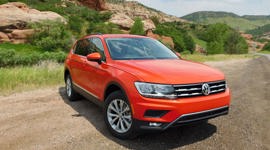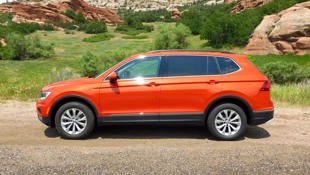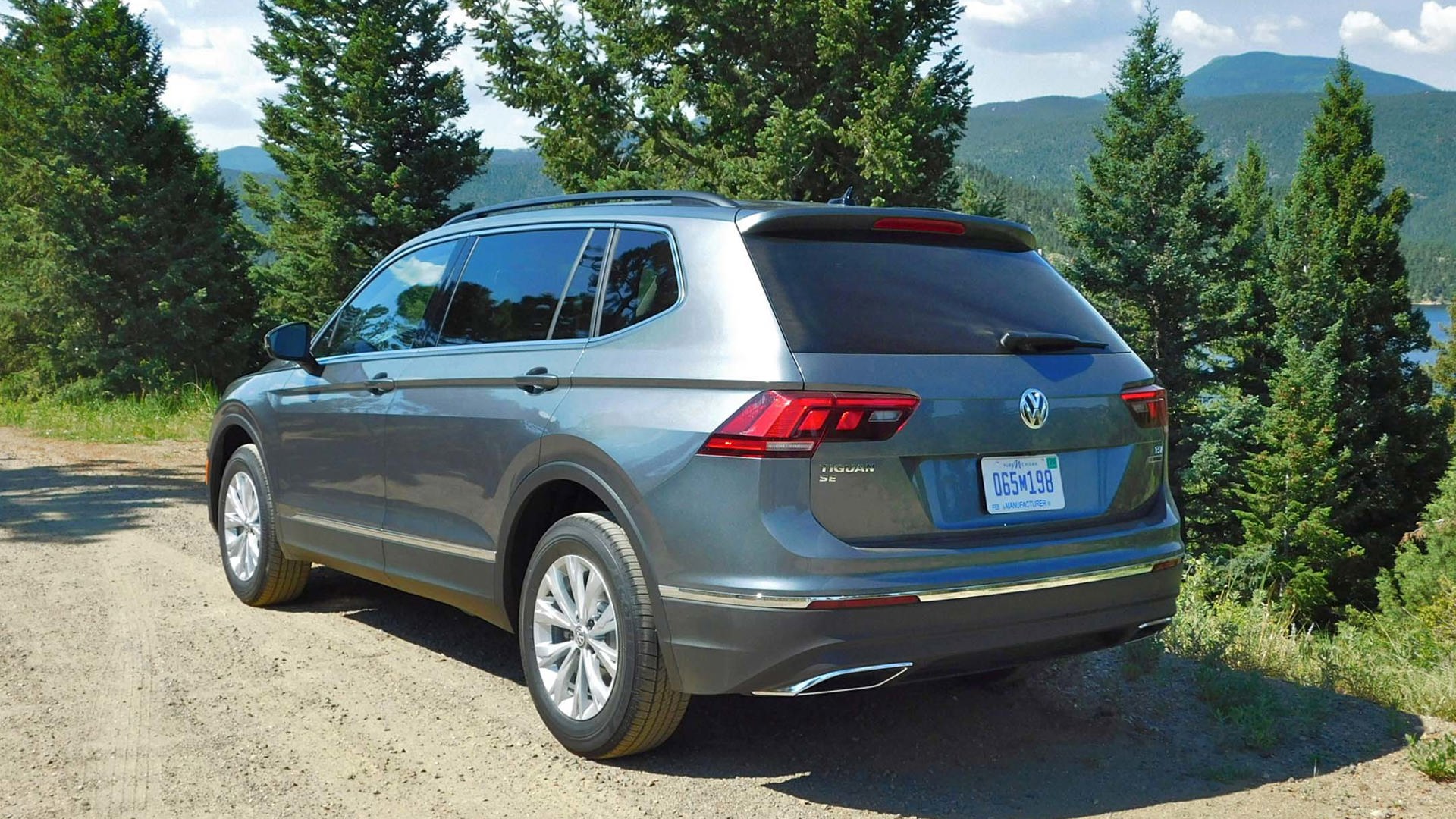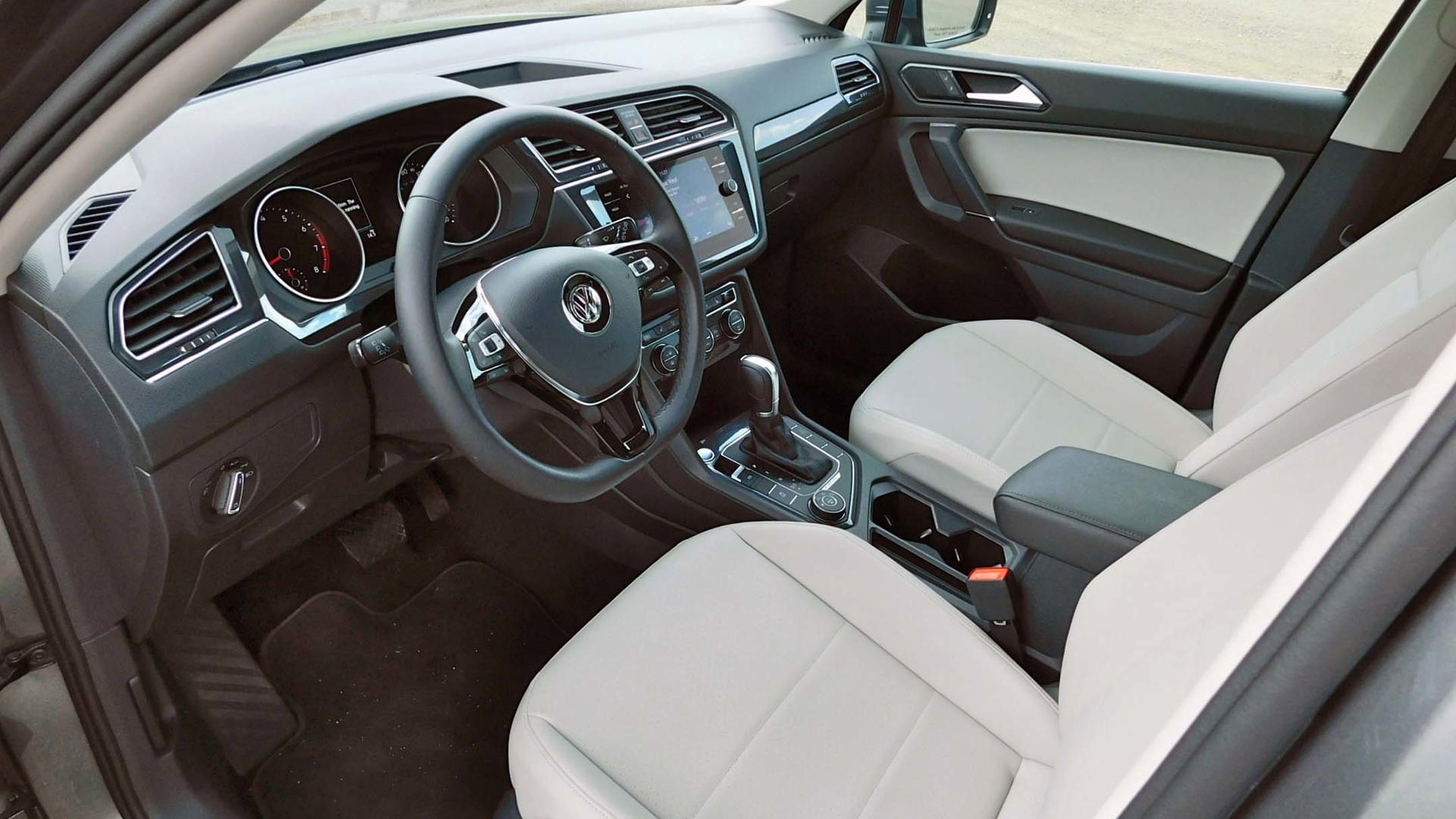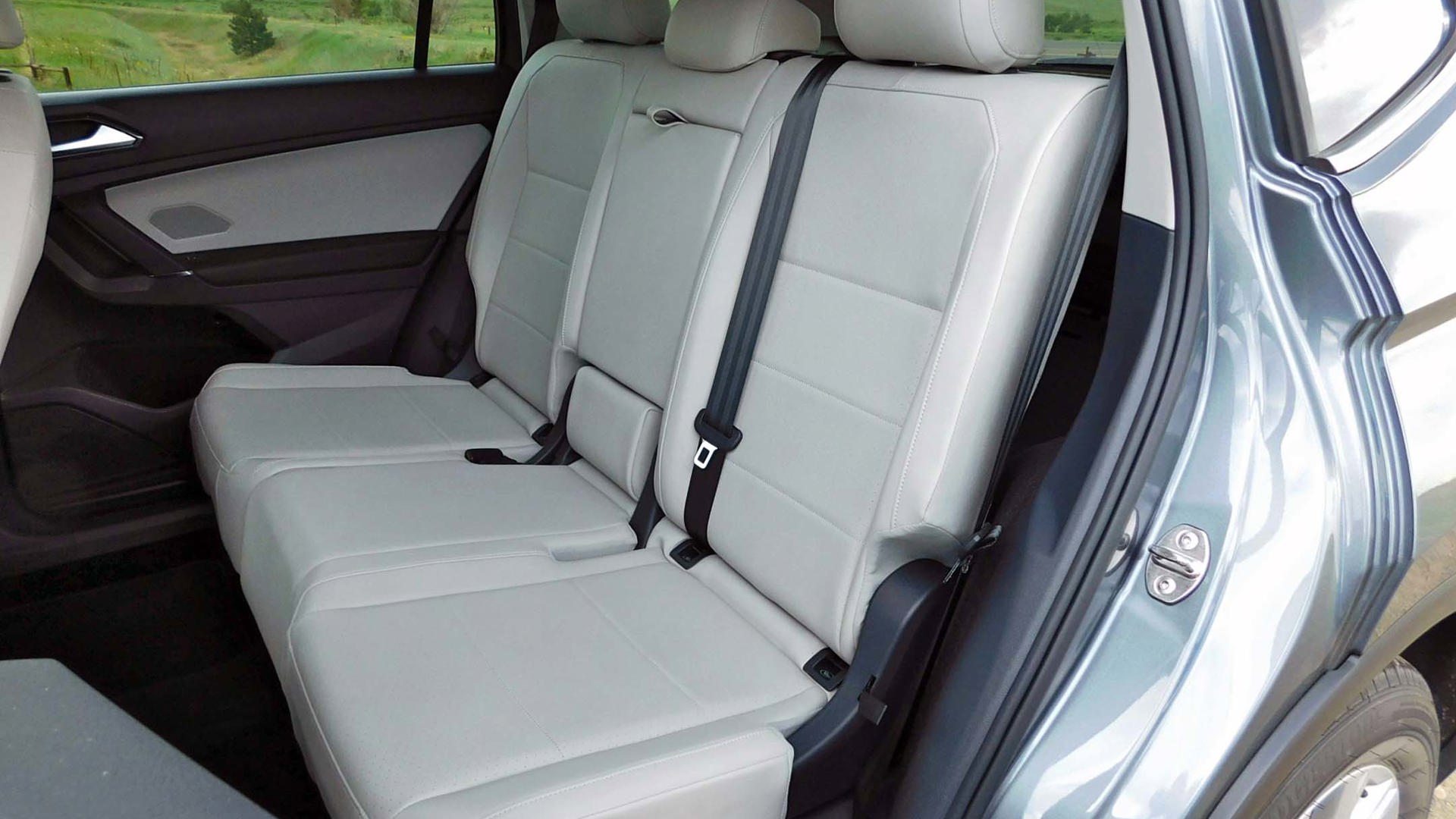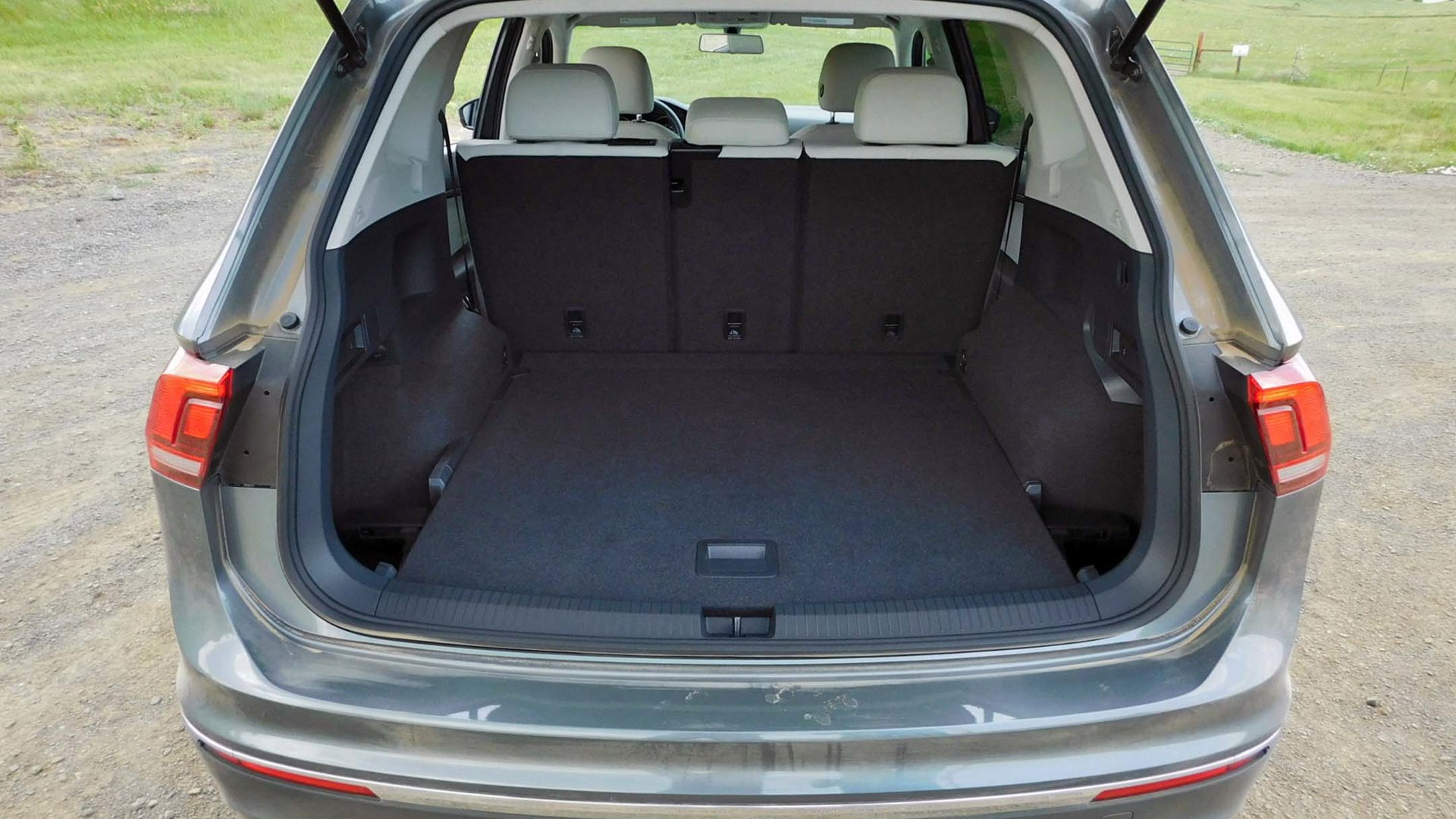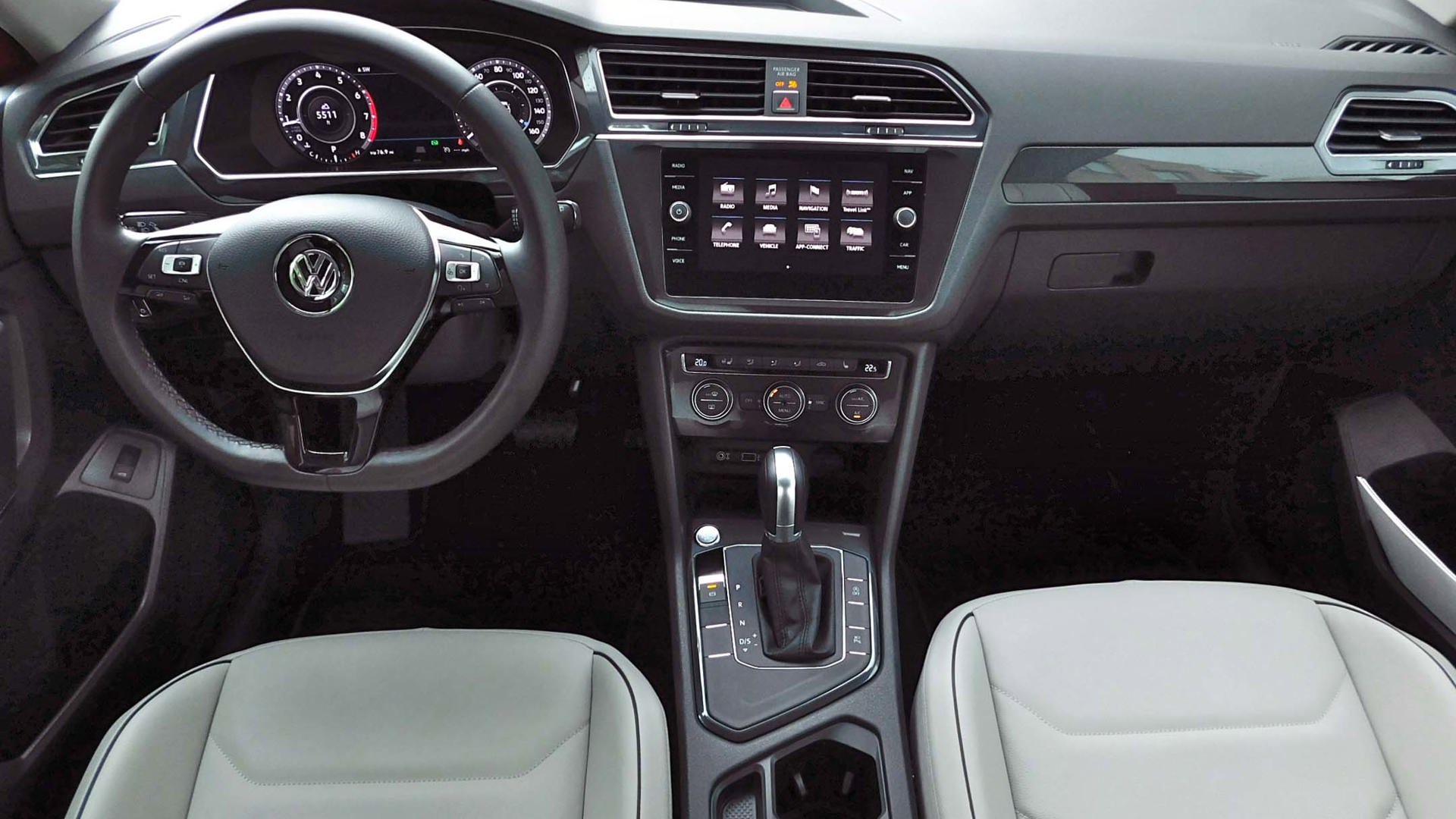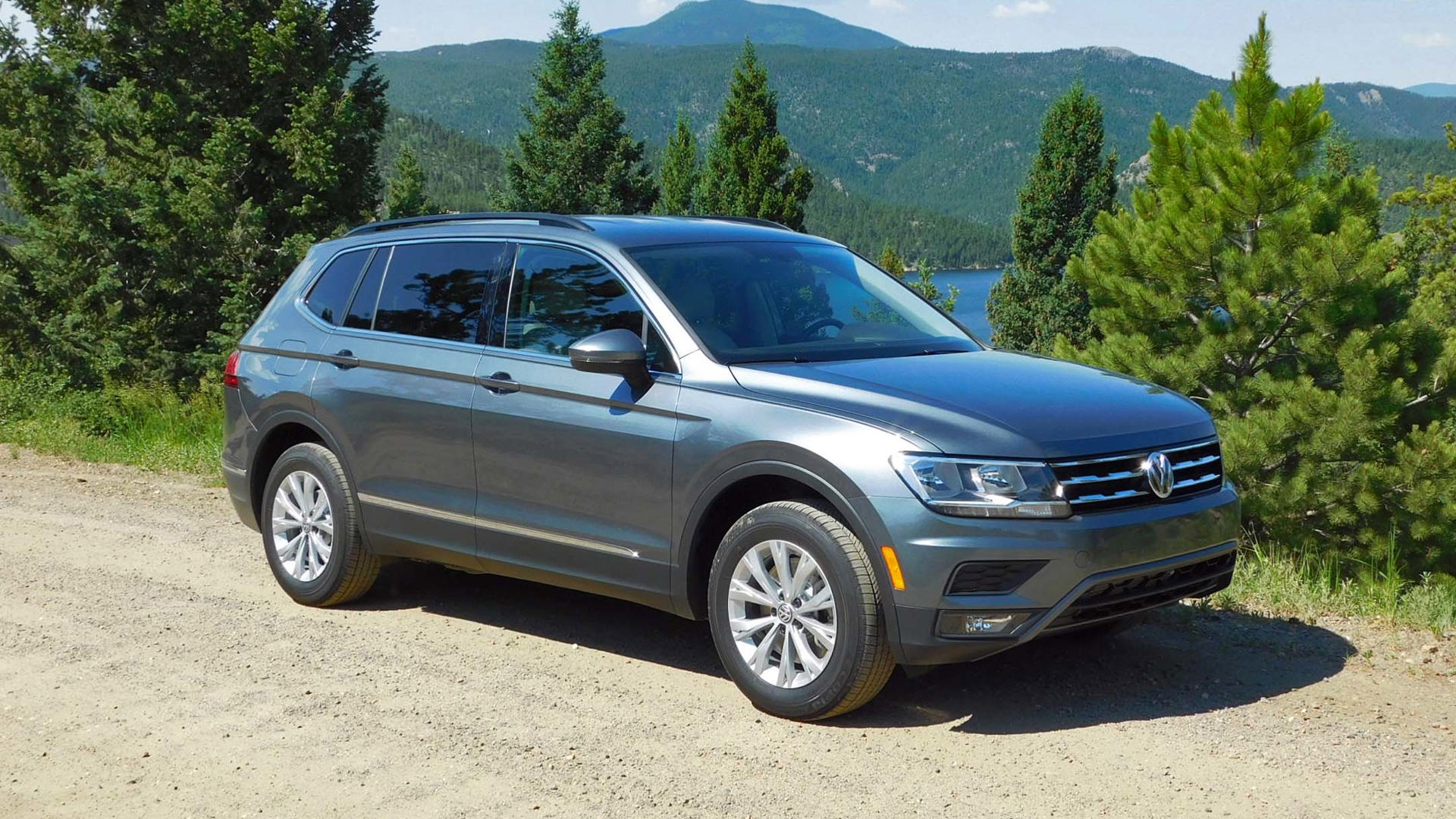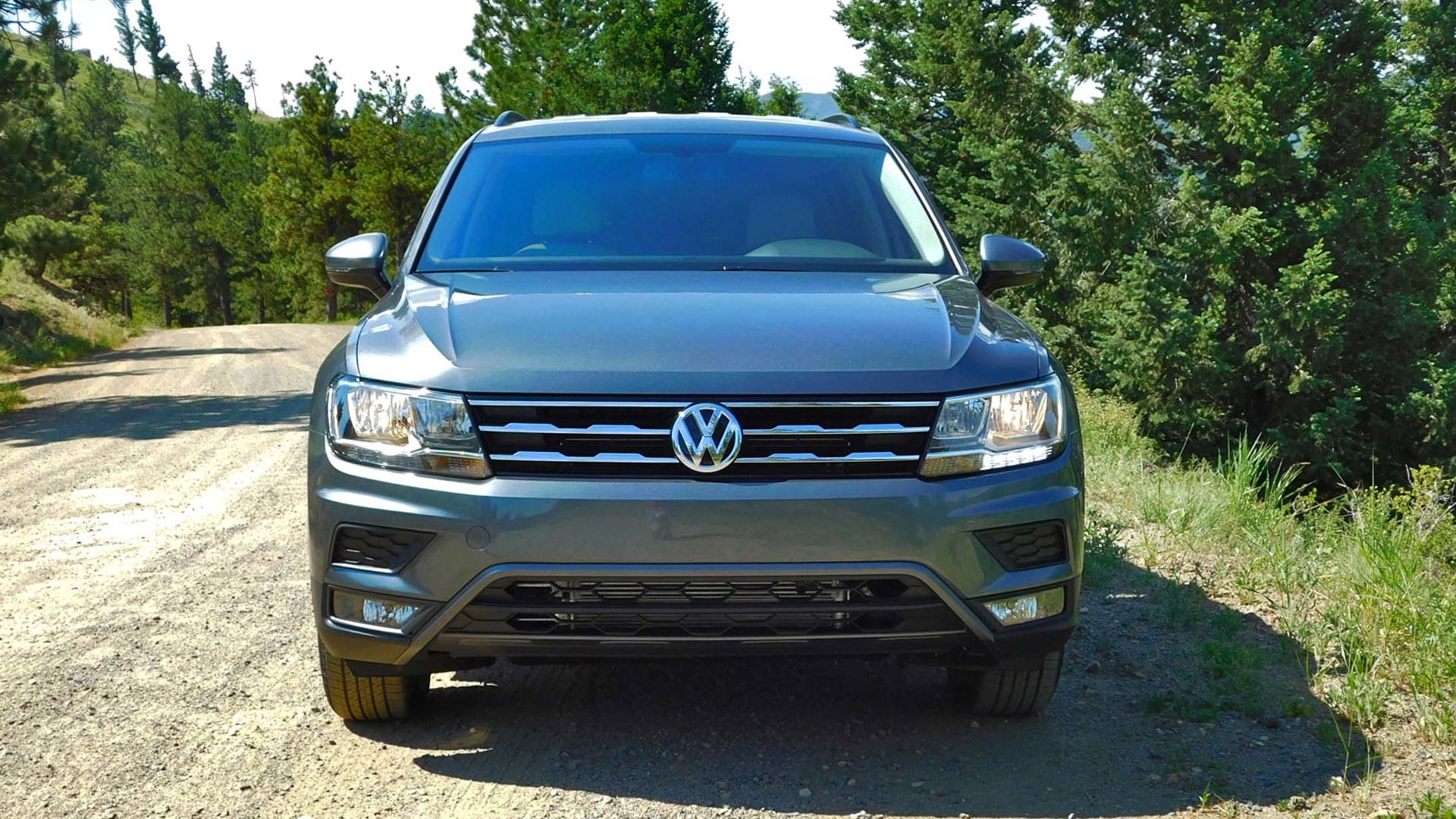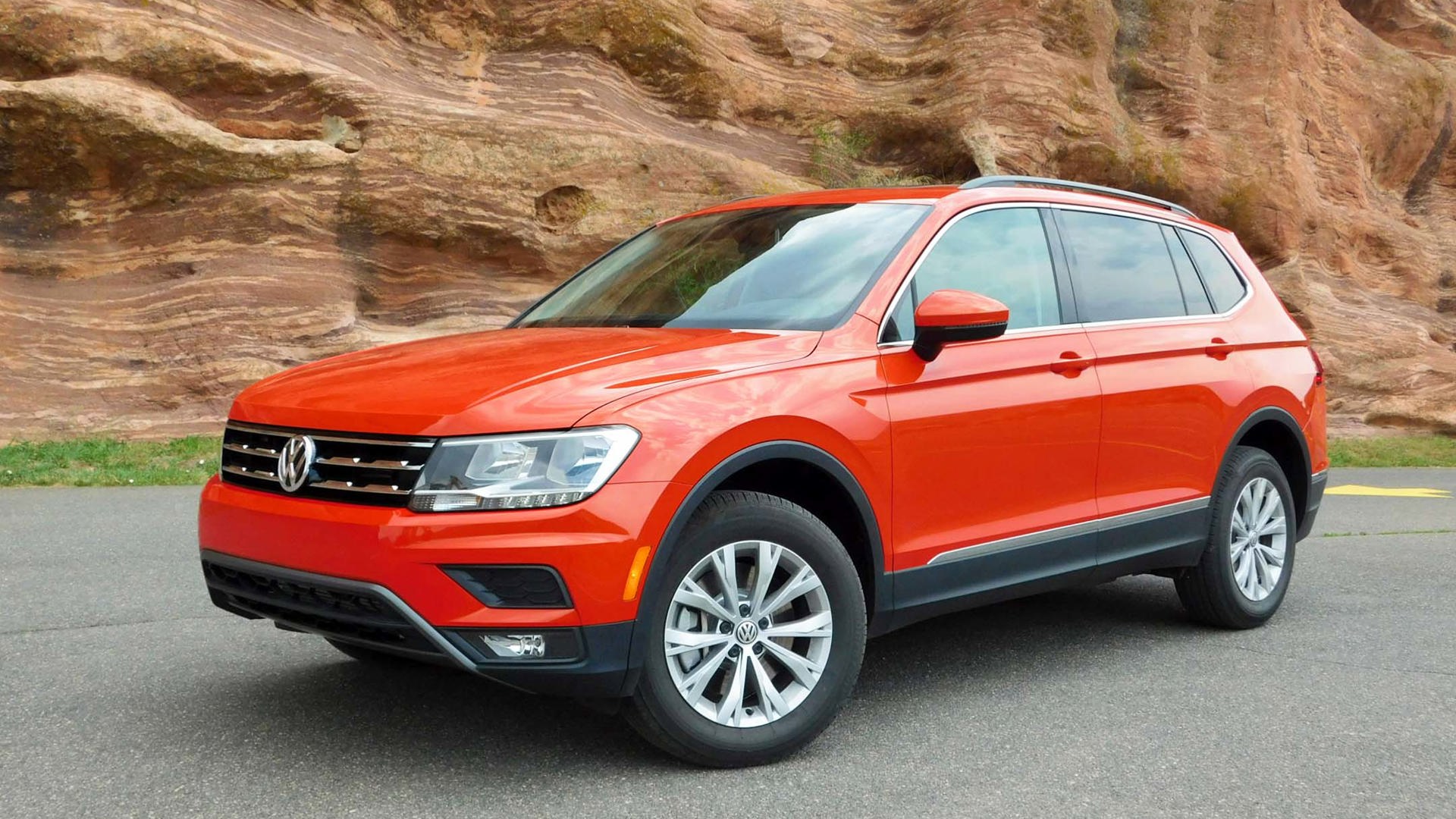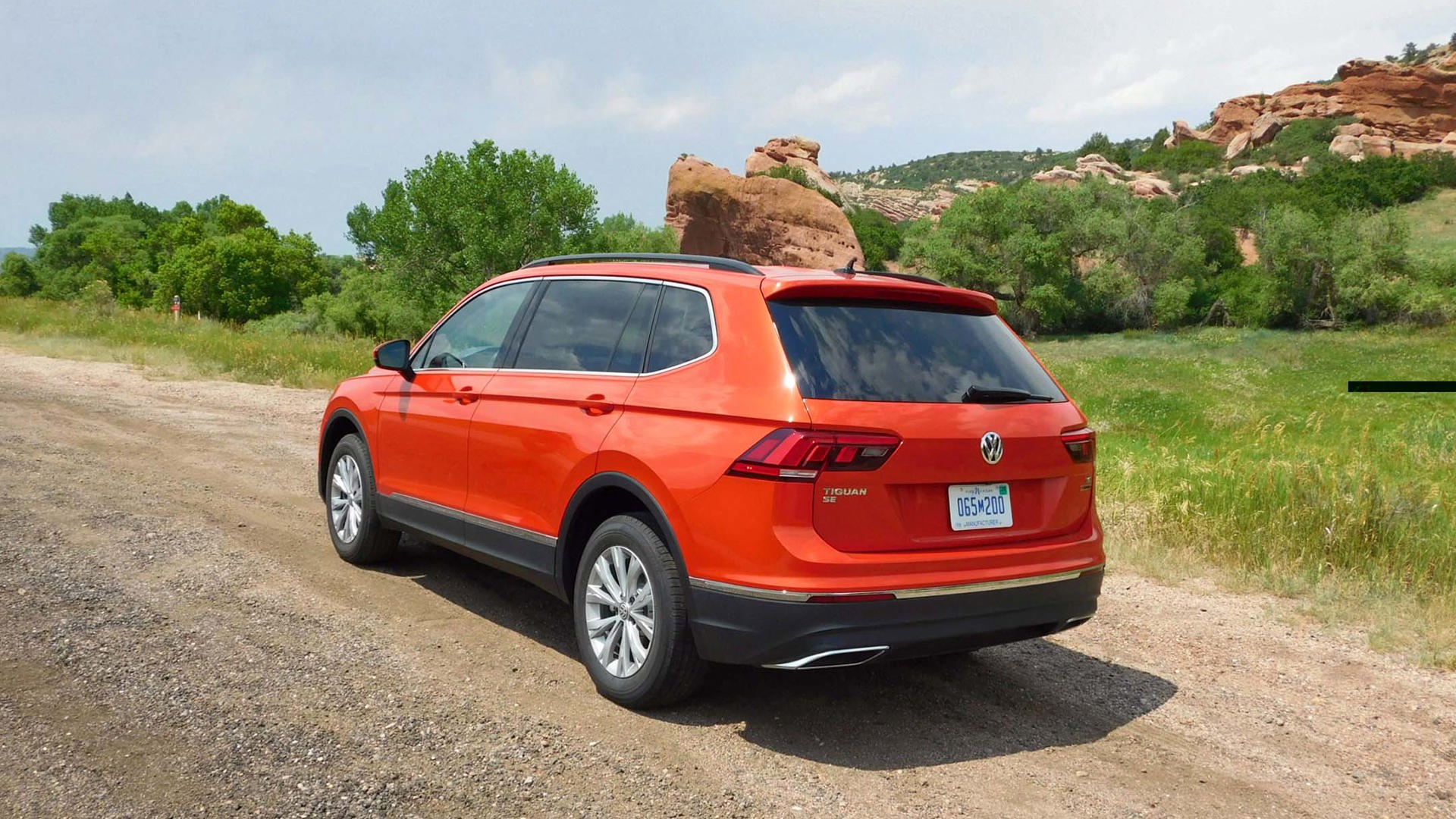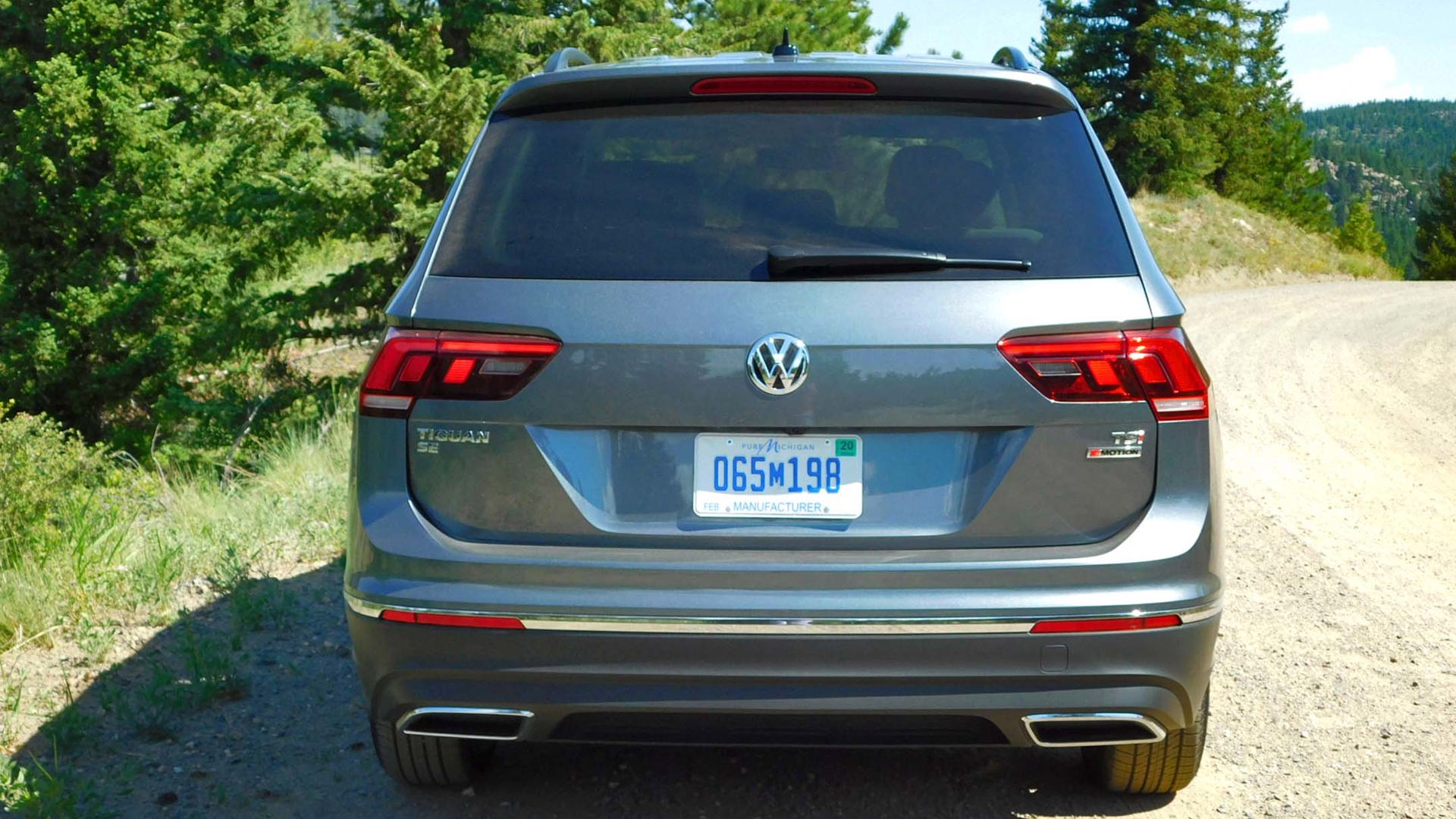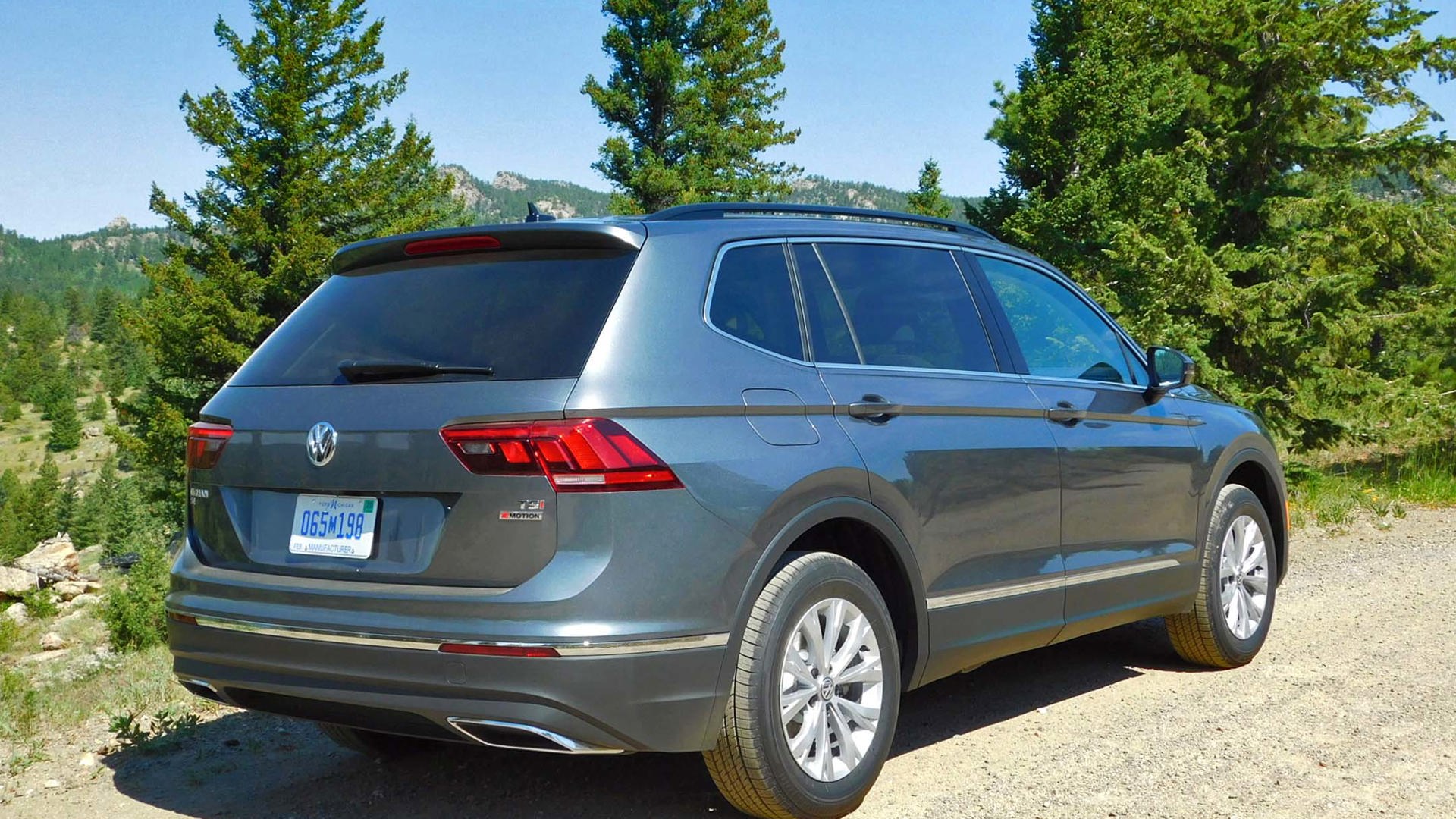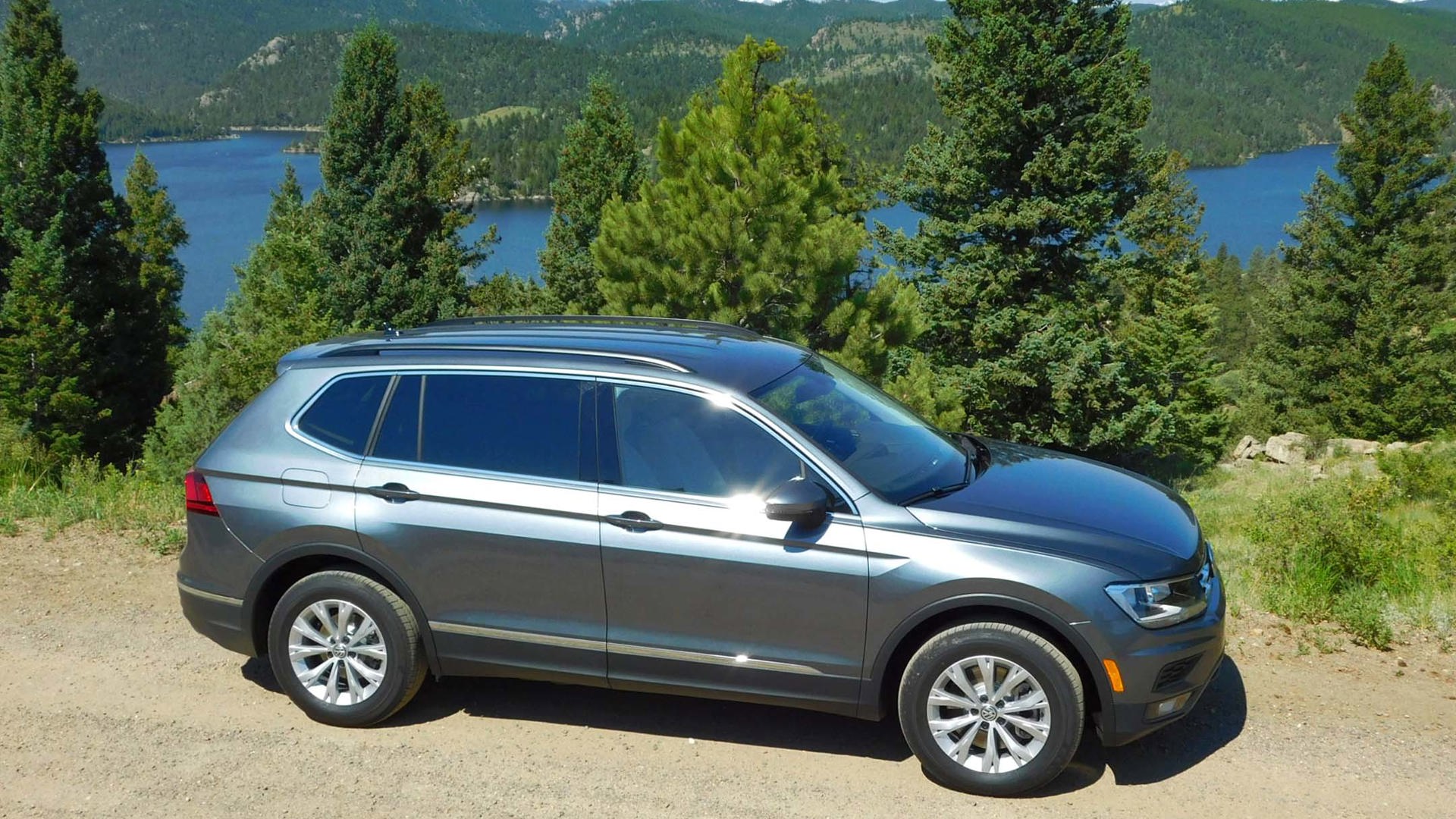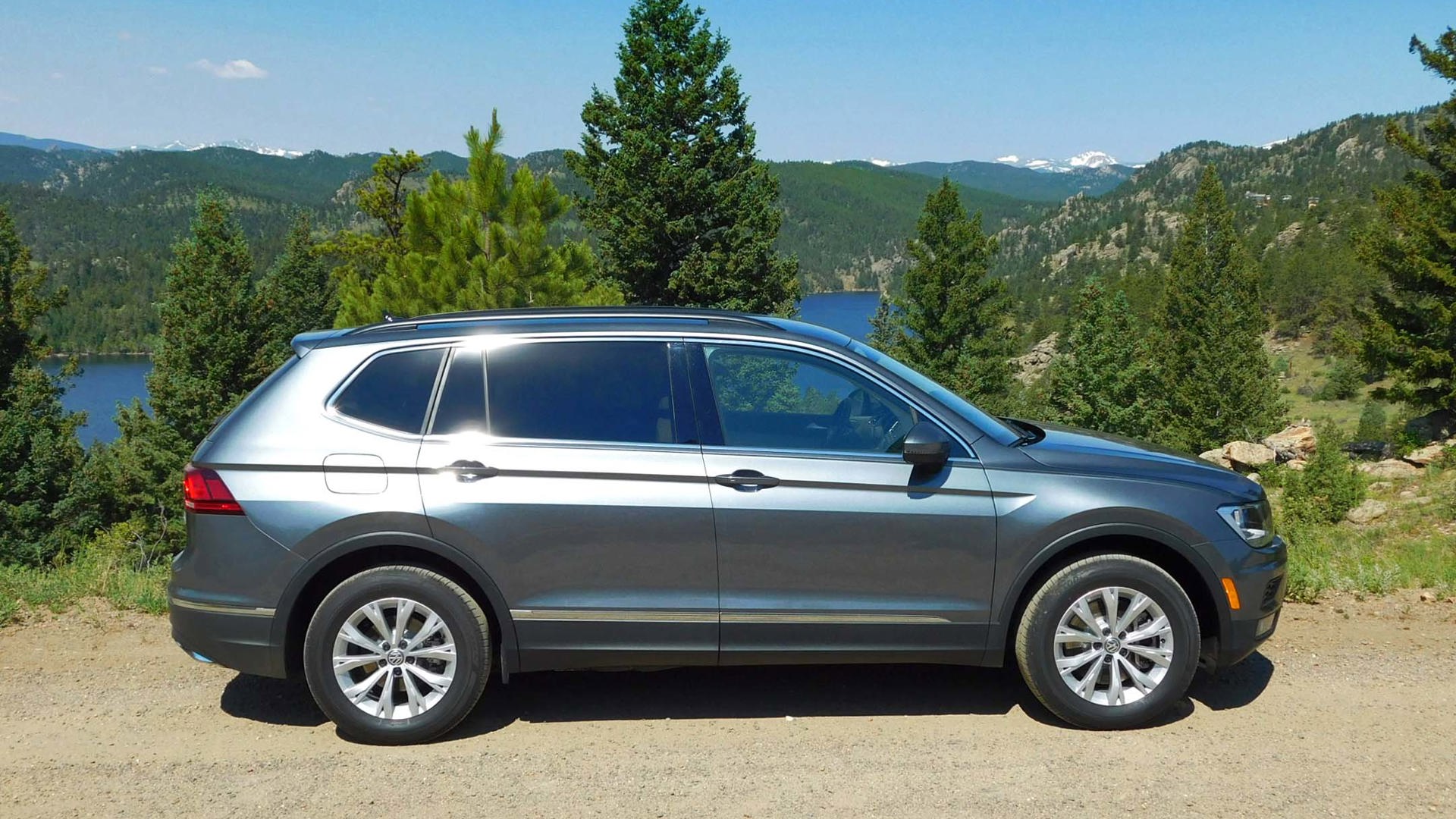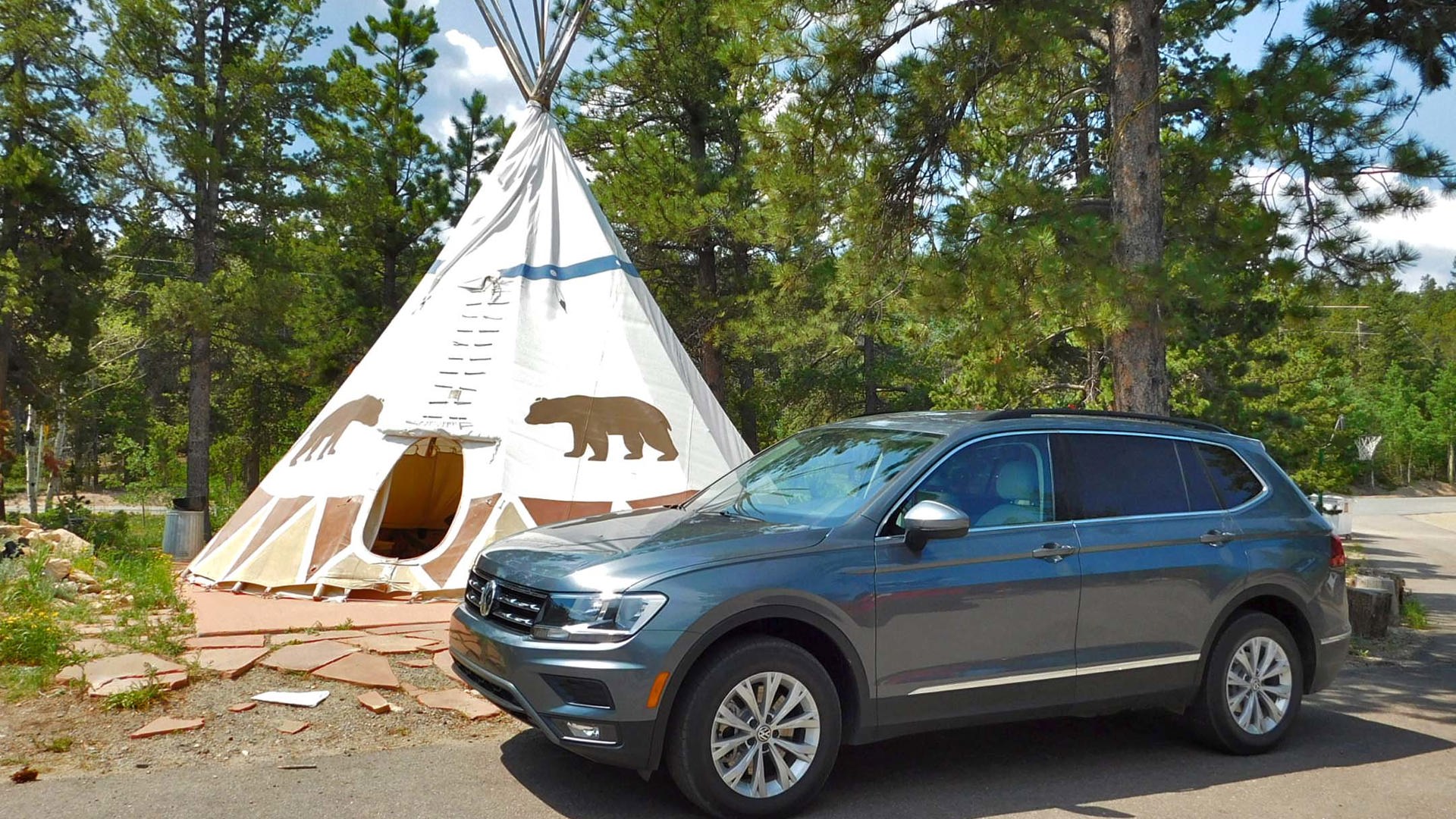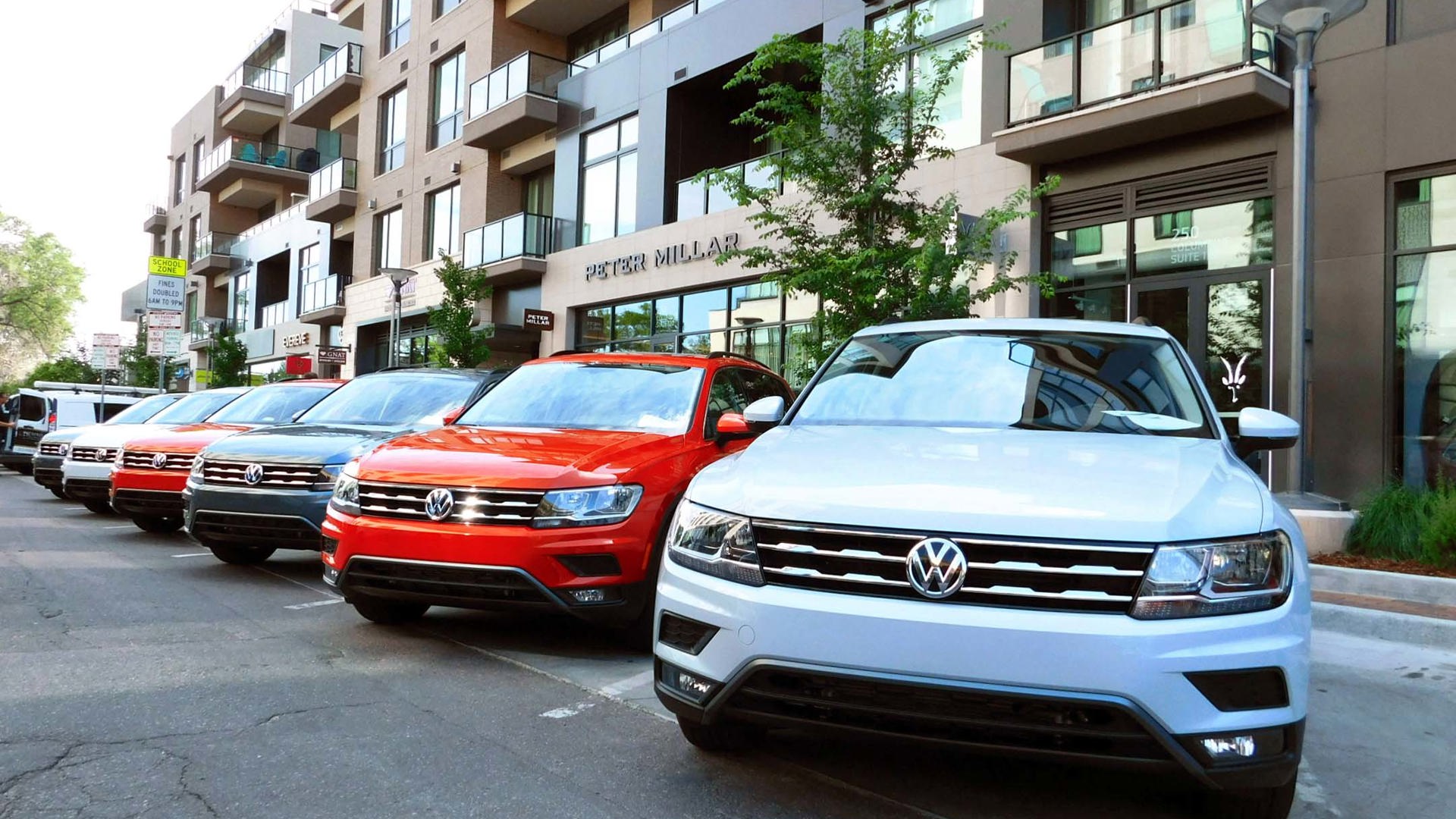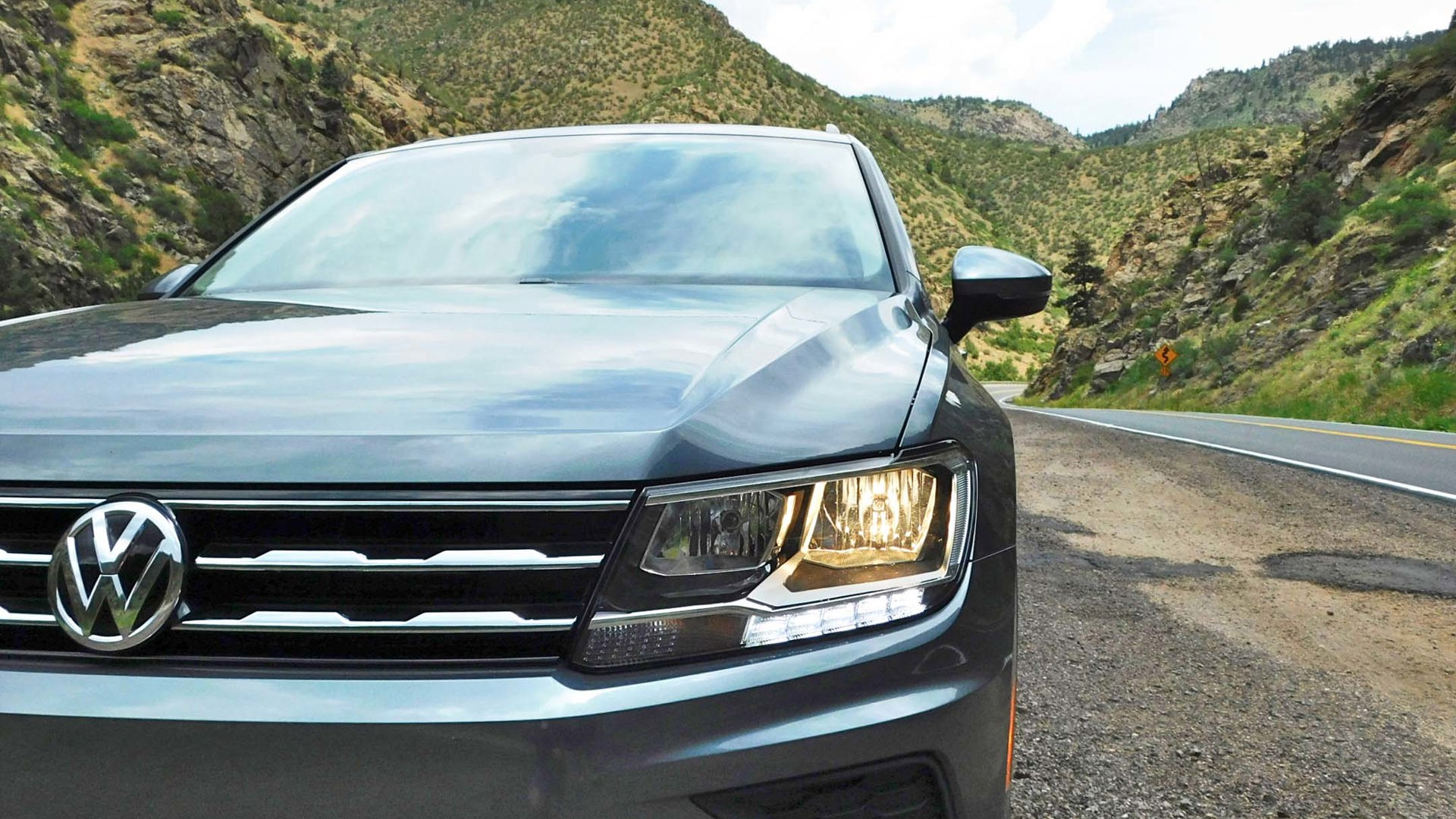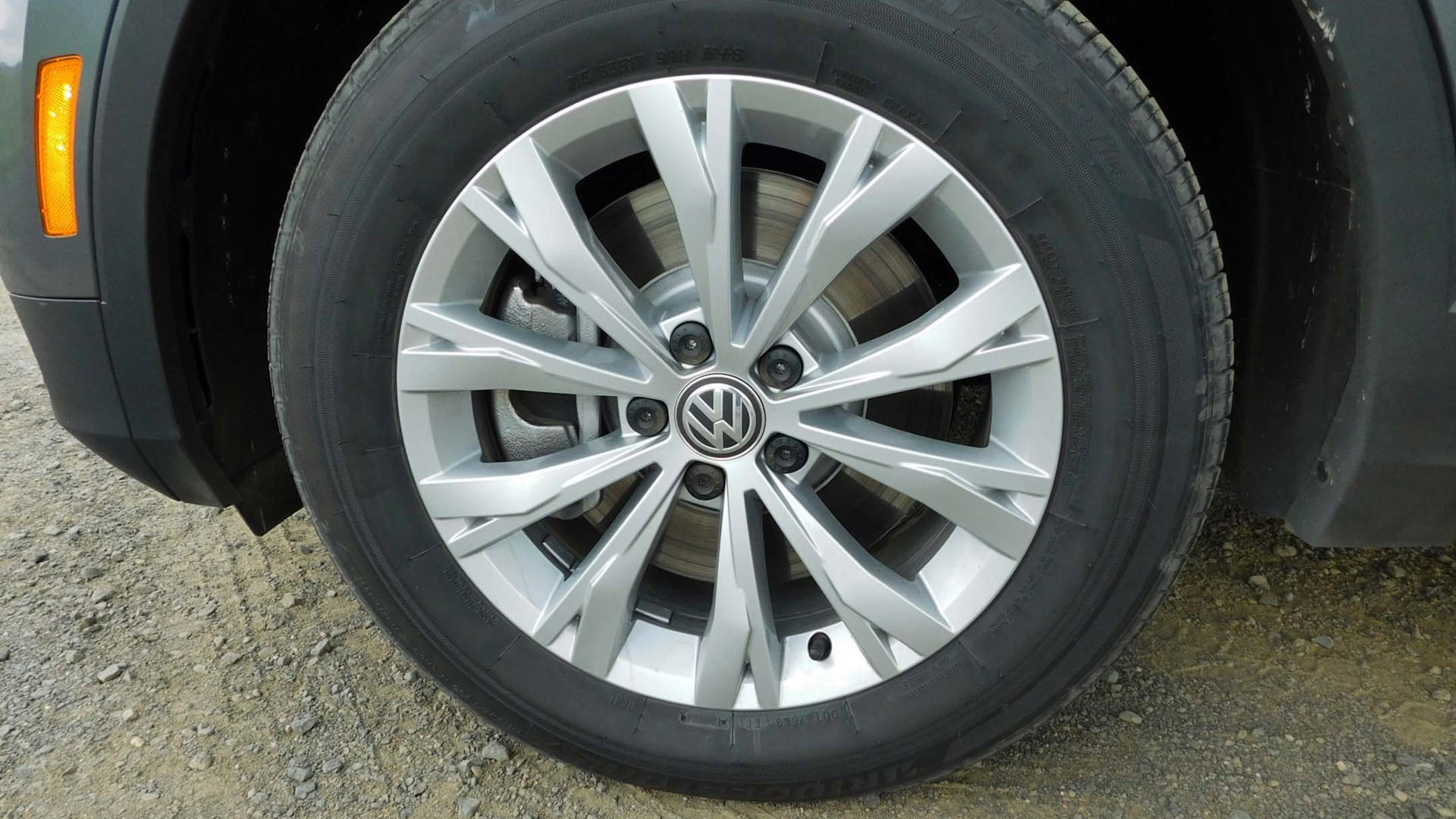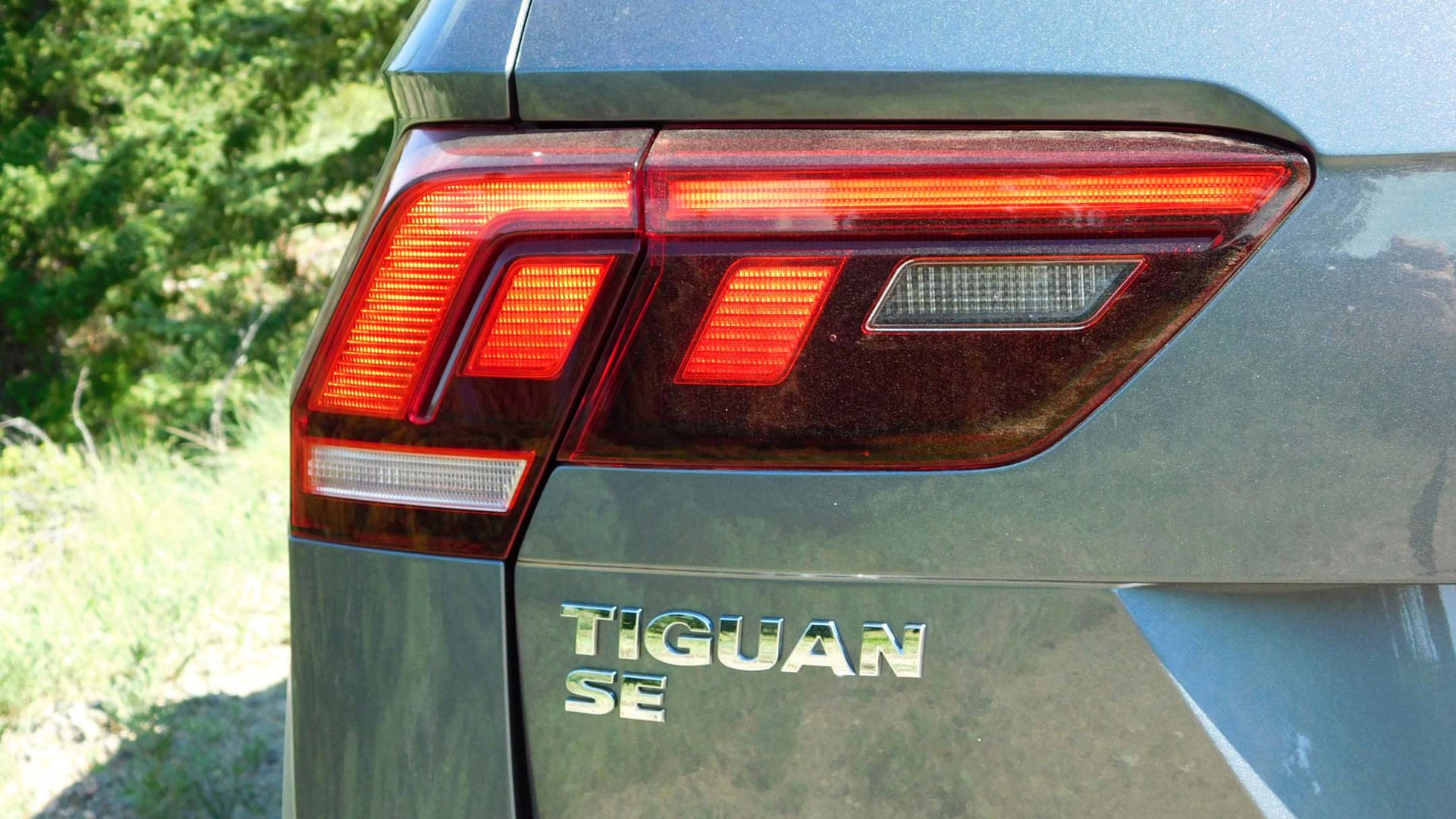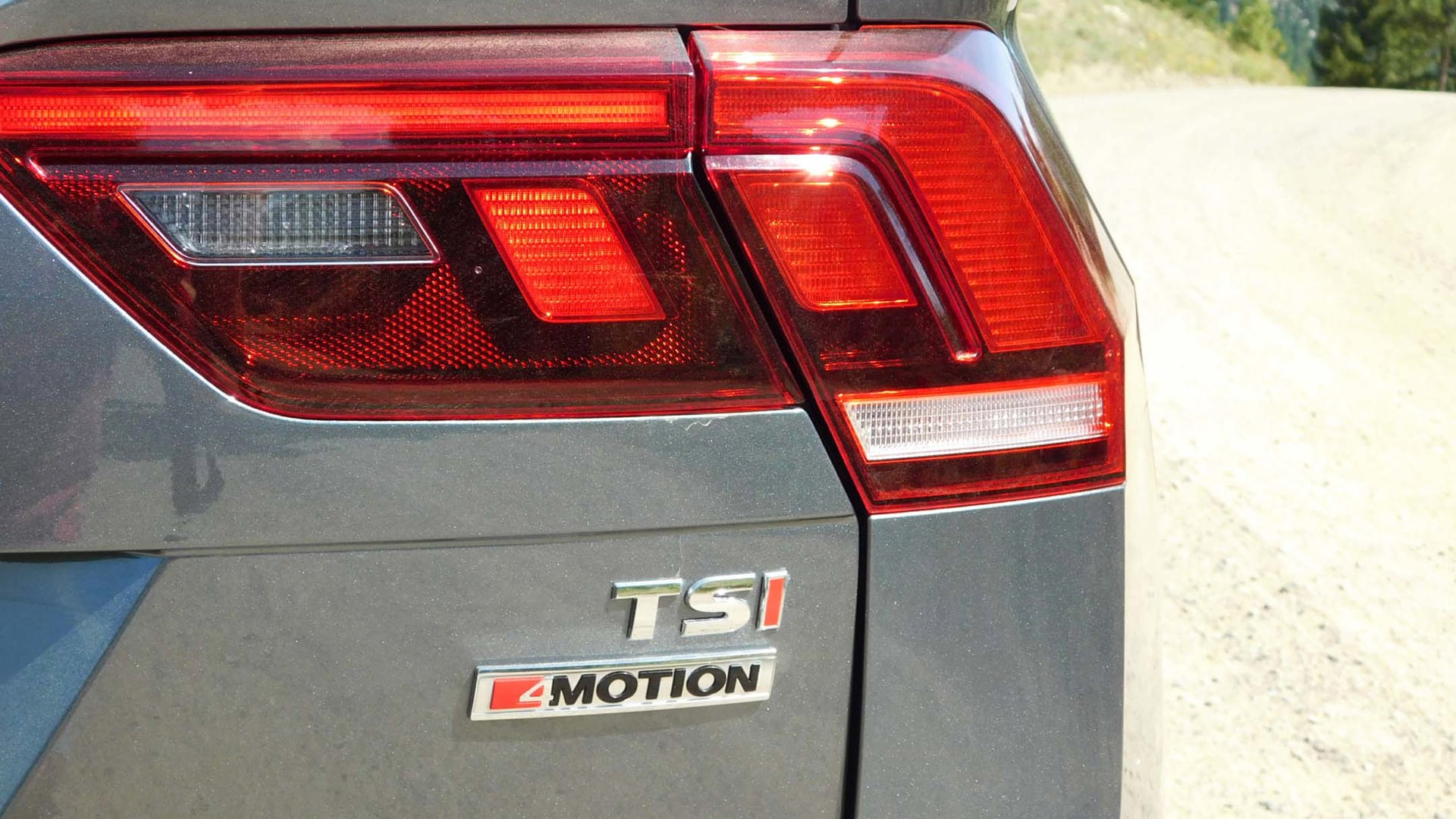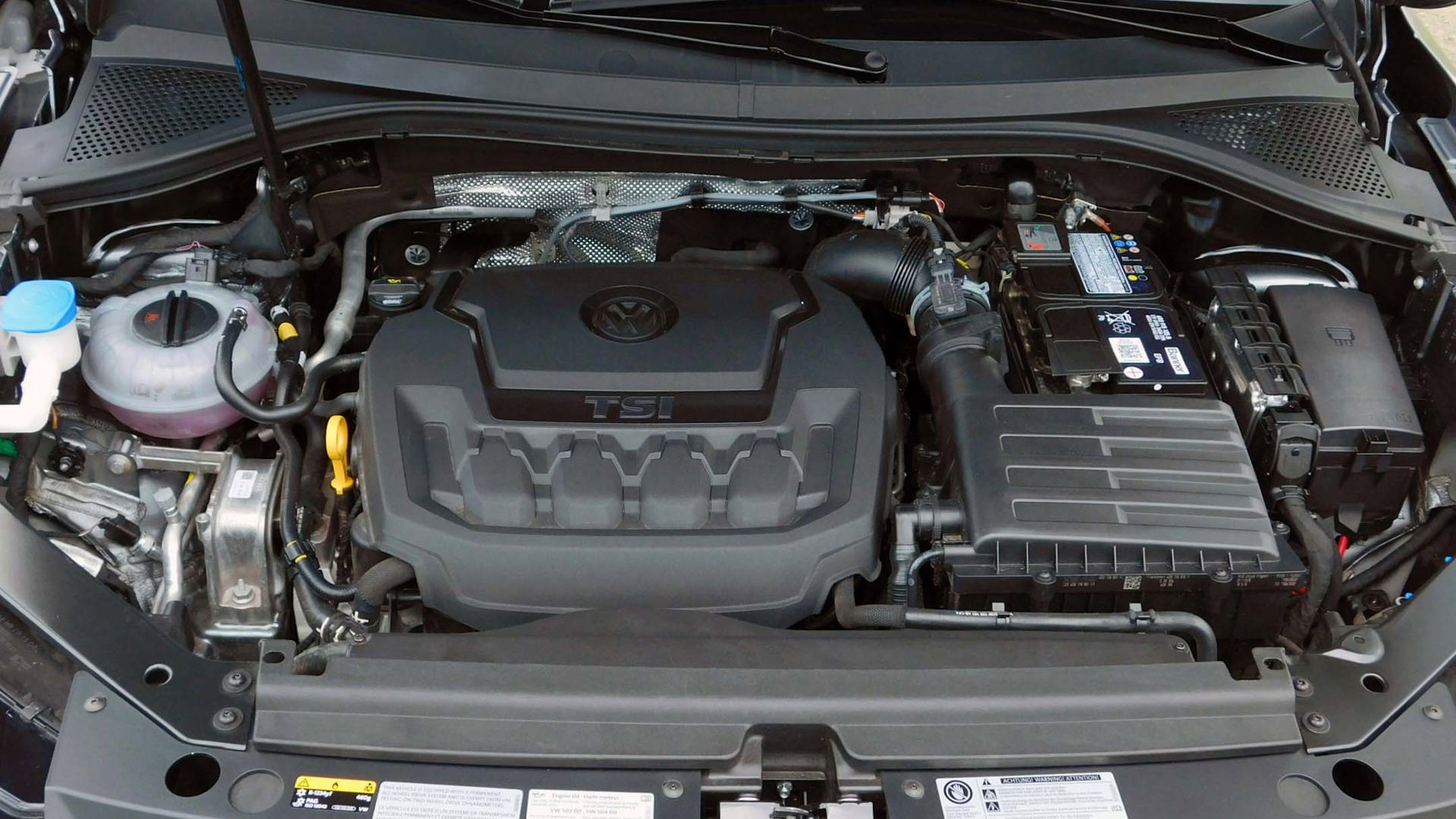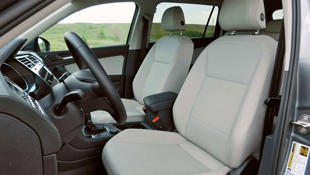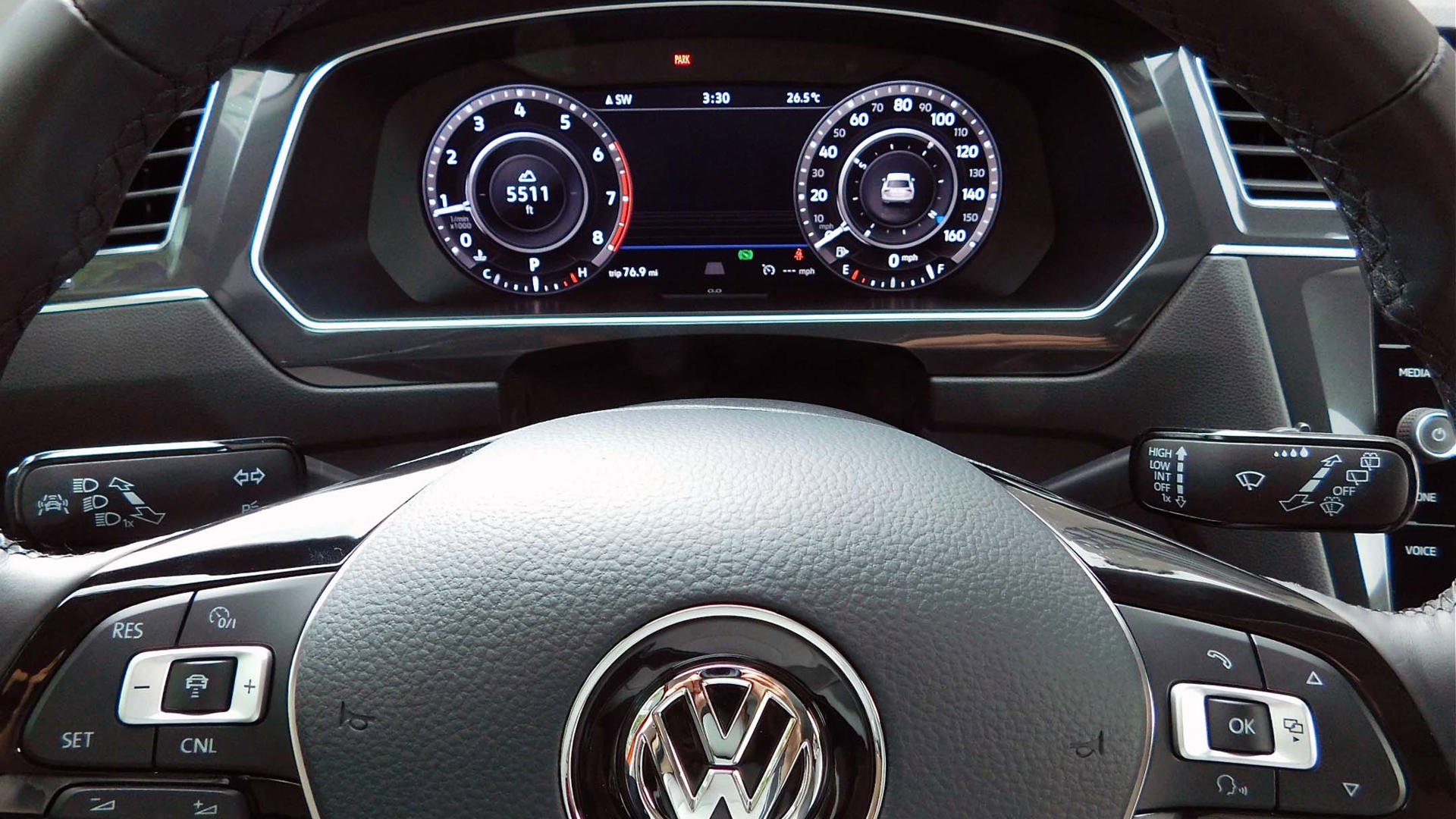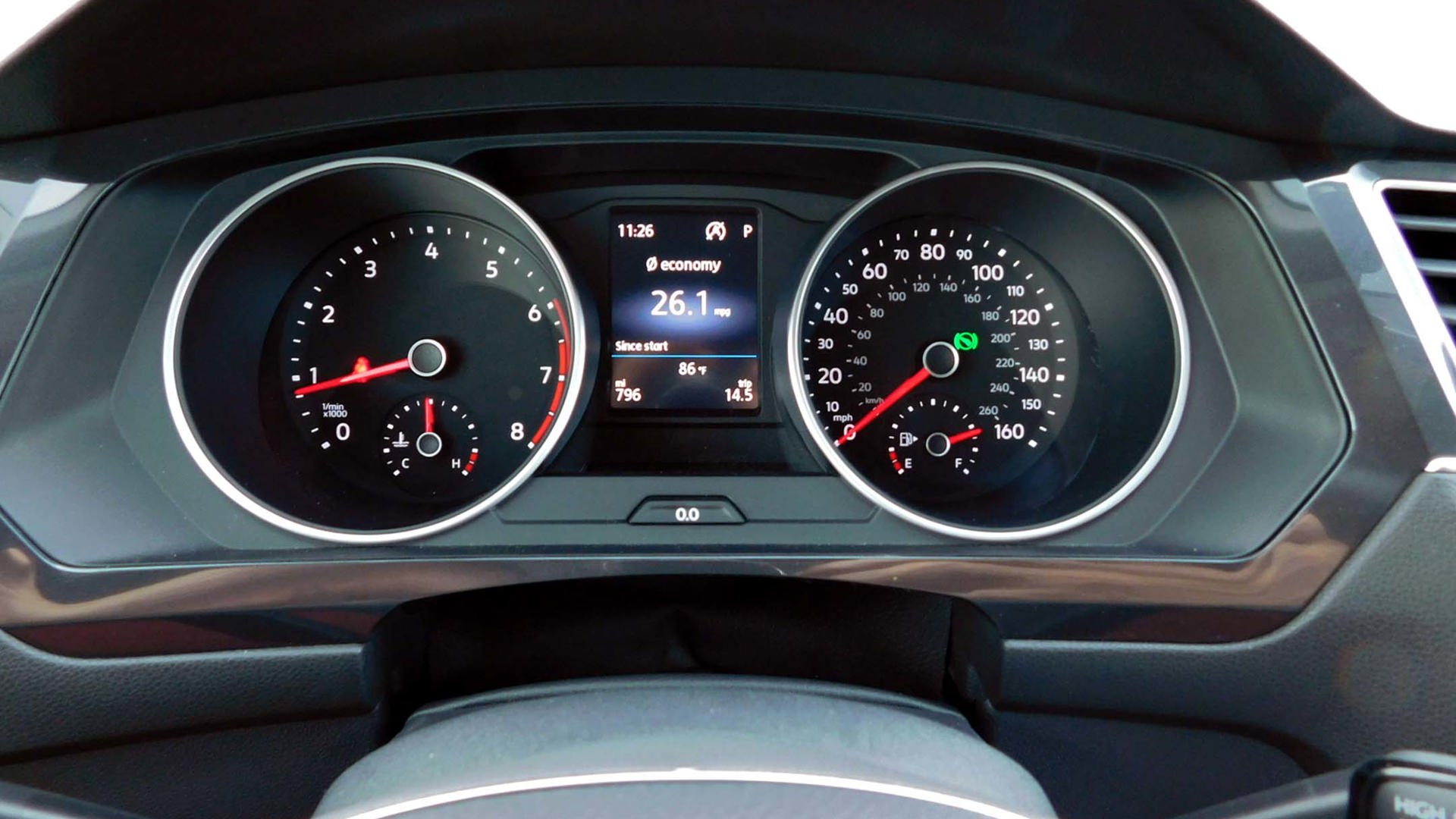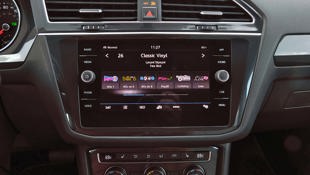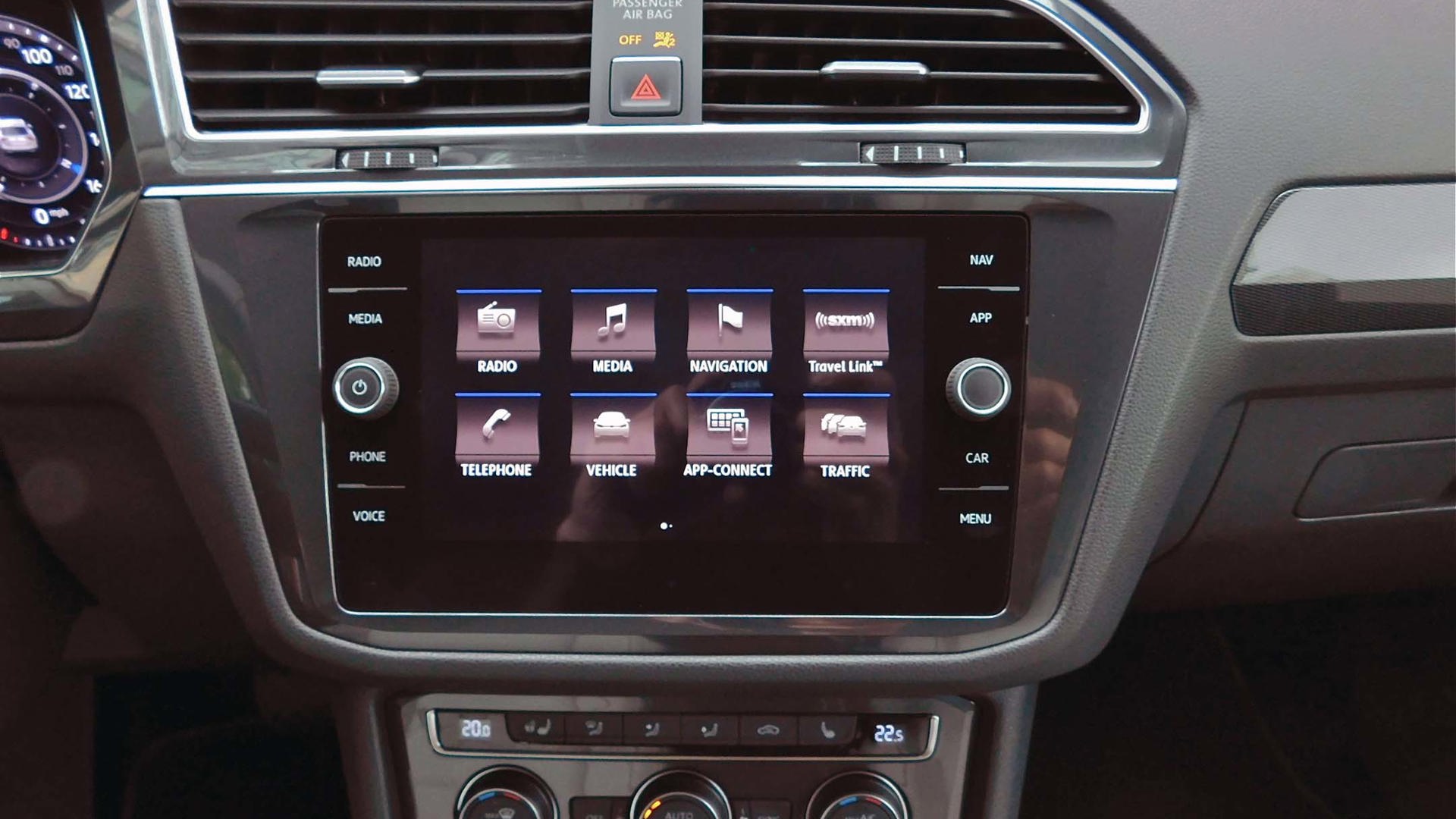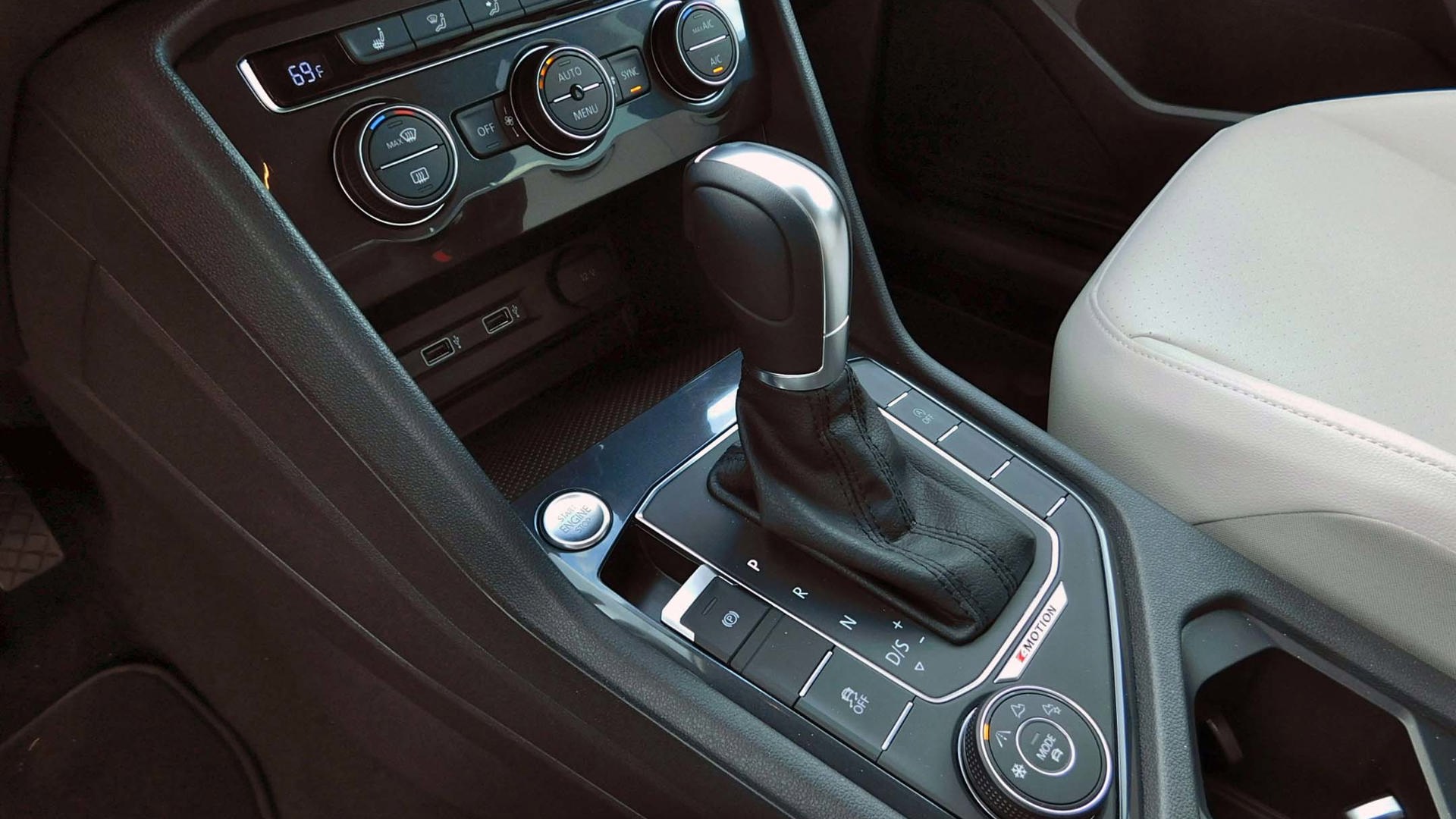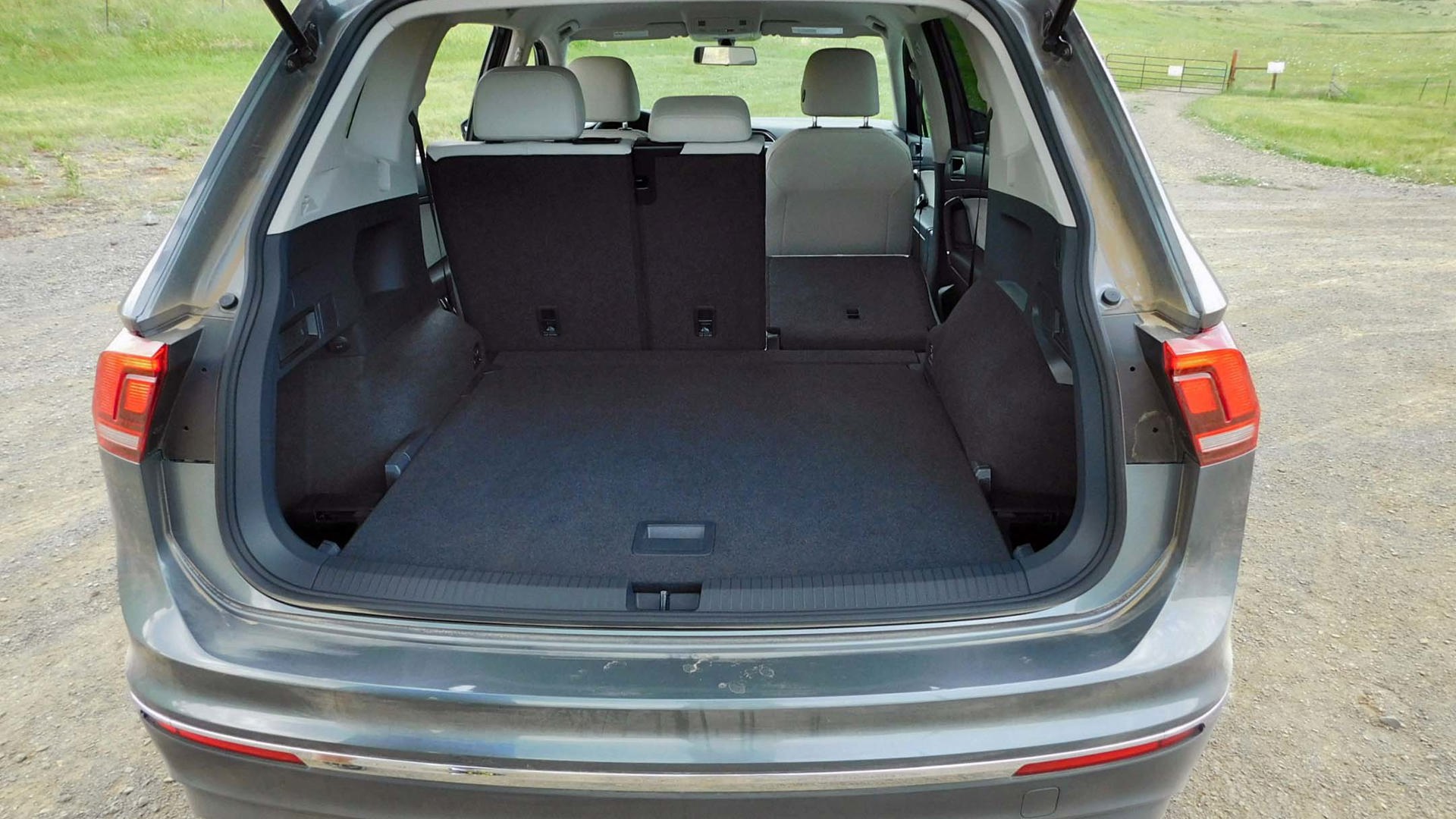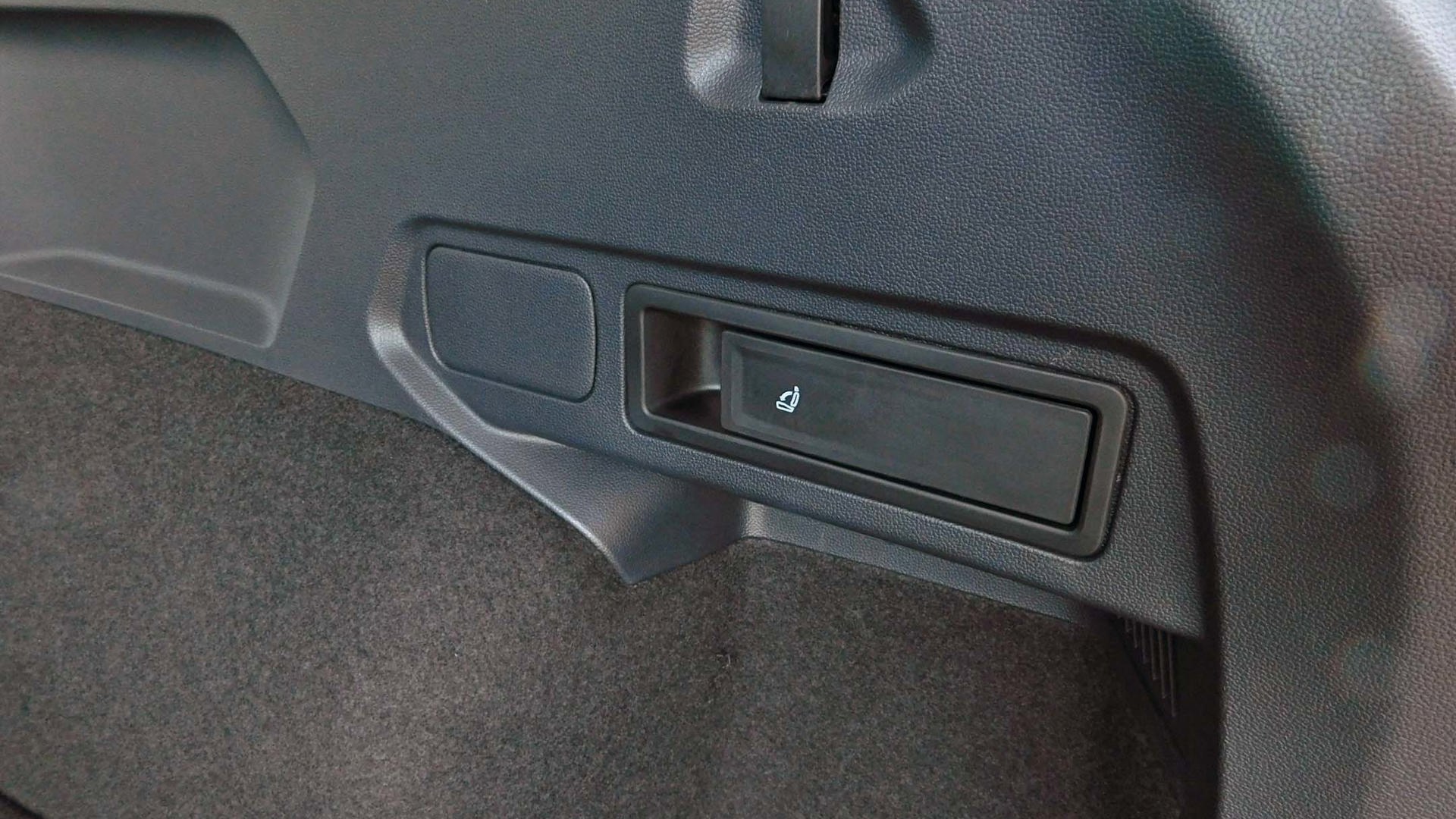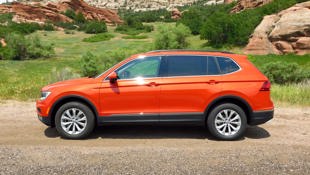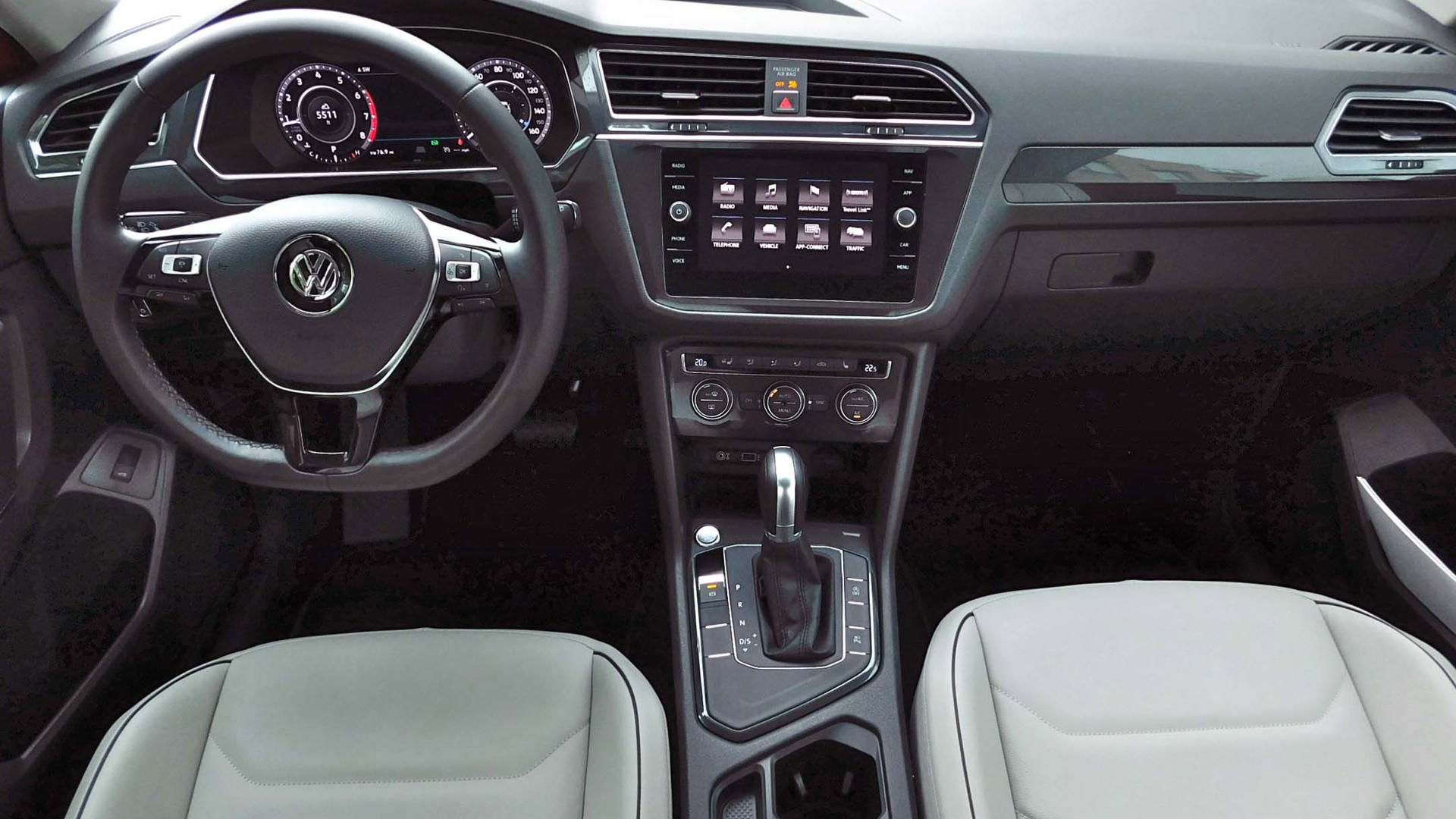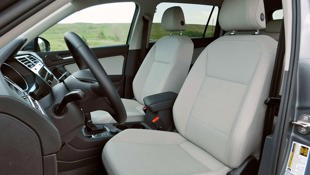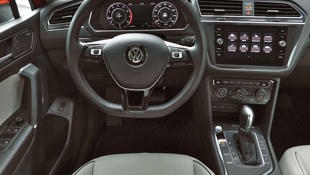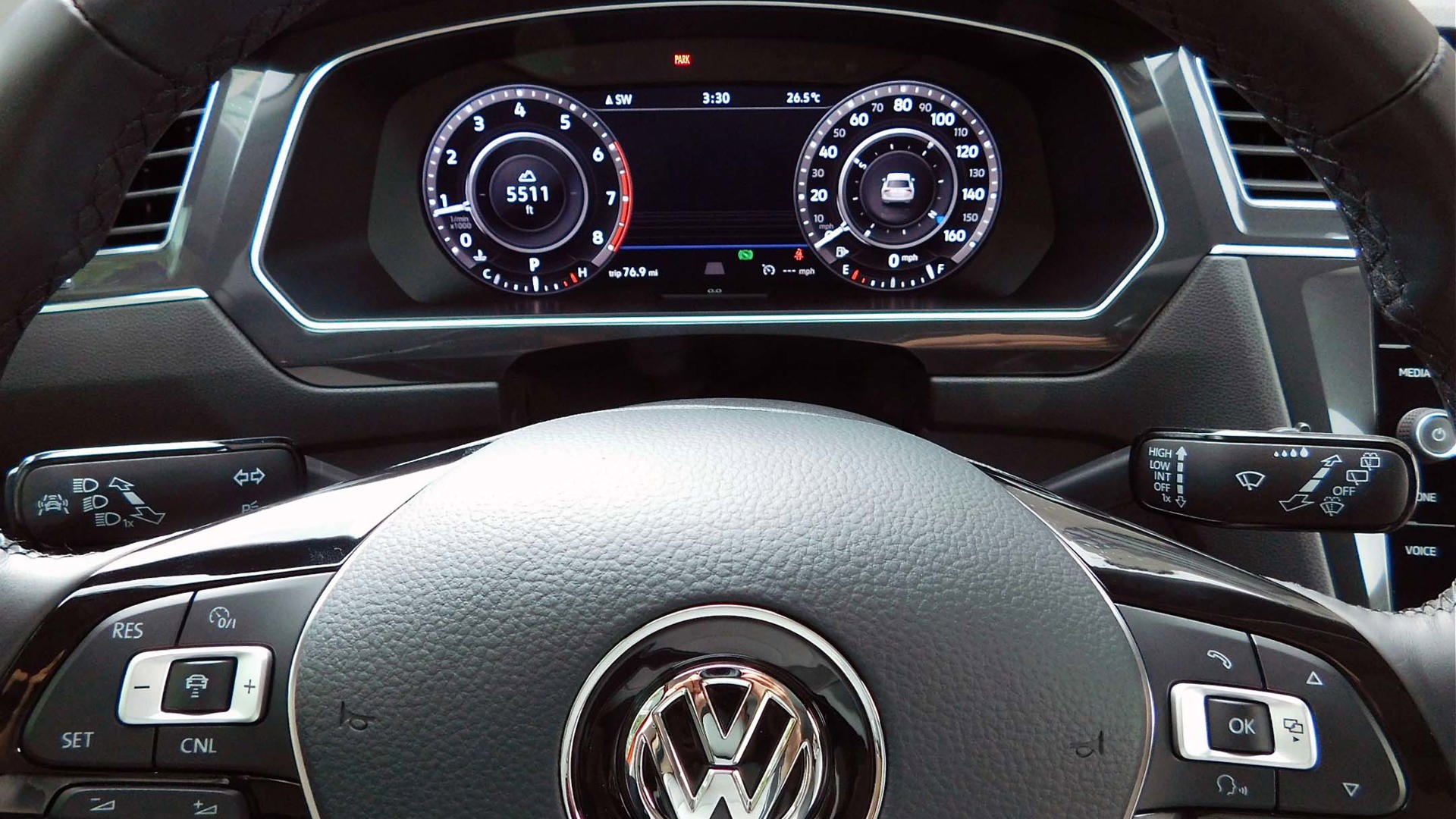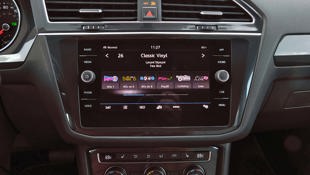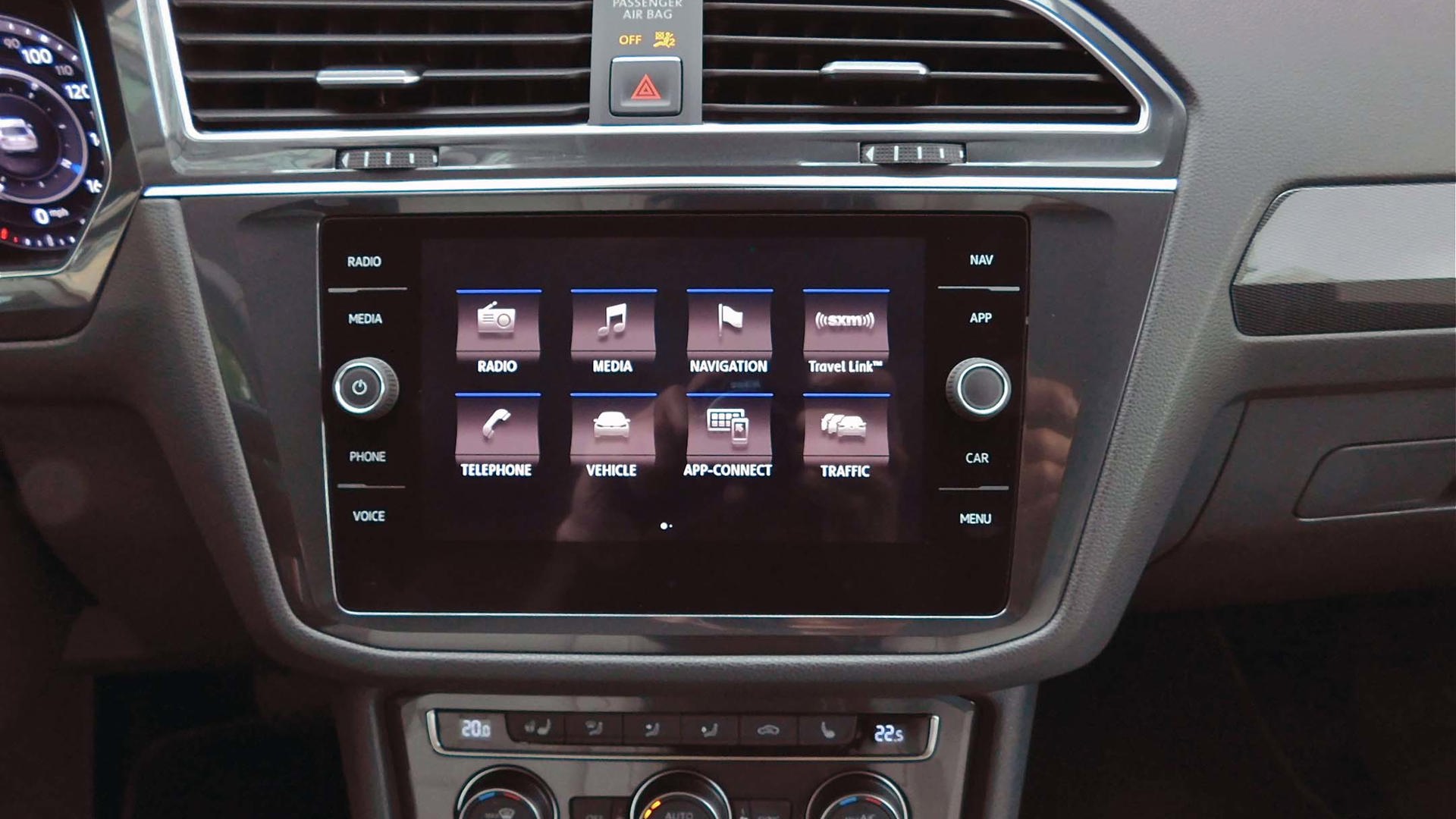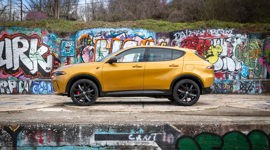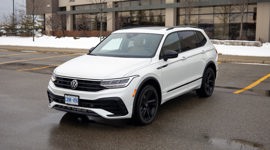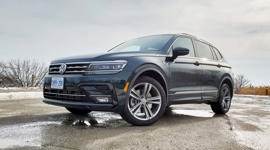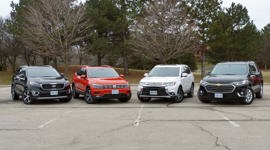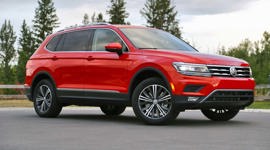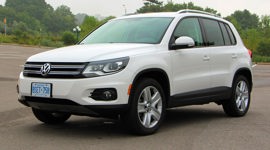DENVER, CO – With temperatures forecast to hit highs of 99 degrees Fahrenheit (that’s 37 degrees Celsius for Canadians), Volkswagen’s launch event for its 2018 Tiguan promised to put the redesigned and upsized compact SUV through a proper trial by fire. It seemed an appropriate introduction, because the Tiguan competes in what’s currently the hottest sales segment in North America’s automotive marketplace.
Ta-da! – available third-row seating.
If you can’t take the heat, as they say, get out of the kitchen.
As things turned out we did indeed get some heat (though not quite as hot as forecast) and we also got clouds, torrential rain squalls and thunderstorms. The new Tiguan easily handled everything Mother Nature threw at it, and appears well equipped to handle most everything a growing family or adventure-loving owner might throw at it too.
Larger North American Tiguan tempts Europeans
The second-generation 2018 Tiguan is a ground-up redesign of Volkswagen’s popular compact SUV, based on the company’s award-winning new MQB (modular transverse matrix) architecture – the same platform as used in the Mk 7 Golf and the larger Atlas seven-seater.
The new Tiguan has been available in Europe for about a year, but in a shorter format. It’s a conservatively handsome design, sleeker and more cohesive that the previous Tiguan, and it should age well. For North American markets, Volkswagen has stretched the new Tiguan by about 200 mm compared to the European version and 268 mm compared to the outgoing model. The wheelbase grows 186 mm compared to the old model and the width by 30 mm, while height is actually decreased by 7 mm.
To help differentiate the stretched North American Tiguan from its German compact counterparts (Audi Q3, BMW X1 and Mecedes-Benz GLA), Volkswagen has used the extra length to not only improve cargo capacity and rear-seat legroom, but also to offer – ta-da! – available third-row seating. The company is upfront about the fact that these seats aren’t suited for adults for any length of time, calling the seating “5 + 2”, but the cramped third row does provide flexibility for families who may need to transport a few friends on occasion.
The 60/40 spilt-folding second row seats, on the other hand, are properly comfortable, with plenty of legroom for tall passengers. An added bonus for Canadian buyers is that the third-row seats are a standalone option across the range, unlike in the US where certain trims come with third-row seating as a no-choice add-on.
It’s telling that after seeing test mules of the larger North American Tiguan, Volkswagen’s European operations decided the added length would make a popular option on that side of the pond (it’s hard to overstate what an improvement the 58 percent larger cargo space makes), so it’s being introduced there as the Tiguan Allspace. There are no plans, however, to offer the smaller European Tiguan here. Instead, Volkswagen’s media relations folks hinted that we should expect another (presumably subcompact) entry in the company’s SUV lineup soon.
While Europeans get a choice of various gas and diesel powerplants, in North America all Tiguans get a revised version of the company’s 2.0L EA888 inline-four. The new engine uses what’s called B-cycle (Budack cycle) combustion timing that closes the intake valves earlier to provide a longer expansion phase, thus improving low speed torque and fuel efficiency.
The new engine is rated at a respectable 184 hp and 221 lb-ft of torque, and is hooked up to a new eight-speed automatic transmission. Front-wheel drive is available in the base trim (Volkswagen expects only about a five percent uptake of FWD in Canada), while upper trims come standard with Volkswagen’s fifth-generation 4Motion on-demand all-wheel-drive system (optional on base vehicles). Towing capacity is a modest 680 kg.
New for 2018 in the Tiguan is a drive-mode selector letting you adjust the drivetrain for snow, highway and off-road driving.
Trims Levels and Features
The 2018 Tiguan will be available in Canada in Volkswagen’s familiar choices of Trendline, Comfortline and Highline trim, although the cars we drove were US versions in SE and SEL trim (roughly equivalent to Comfortline and Highline).
Standard equipment across the lineup includes LED daytime running lights and taillights, Bluetooth phone connectivity, “App-Connect” smartphone integration (supporting Apple CarPlay, Android Auto and MirrorLink), automatic headlights, air conditioning (with automatic climate control in Comfortline and Highline trim), alloy wheels (17-inch on Trendline and Comfortline models, 18-inch on Highline models) and a six-speaker audio/infotainment system with colour touchscreen display.
On all but the Trendline cars the touchscreen is a big, easy-to-read 8-inch display, nicely integrated into the dash (Trendline cars get a standard 6.5-inch screen, with the 8-inch screen optional). The system will be familiar to anyone who has experienced a Volkswagen product in the past couple of years, and I found it generally intuitive to use and quick to respond.
Stepping up from the Trendline to the Comfortline trim adds standard-equipment 4Motion all-wheel drive, a lovely panoramic roof, front fog lights, keyless entry, heated seats, eight-way power driver’s seat (versus six-way manual seat), rain-sensing wipers, leather-wrapped steering wheel, Sirius satellite radio, blind-spot assist, front assist with emergency autonomous braking, pedestrian monitoring and an alarm system, among other features.
The Highline trim adds things like leather upholstery (a convincing leatherette is used in Comfortline trim), heated steering wheel, a configurable digital instrument cluster, navigation system, driver’s seat memory, ambient lighting (including around the sunroof’s perimeter, which is a neat touch), power liftgate, park distance control and an upgraded Fender eight-speaker audio system. An optional Driver’s Assistance Package adds adaptive cruise control, around-view camera, lane-keep assist, automatic high-beam control and remote start.
The Drive: typically Teutonic VW
On the road, the new Tiguan offers a typical Volkswagen driving experience, with few surprises. So you get a clean, functional cabin offering a premium feel, with a well-sorted suspension that offers precise steering and a comfortable if relatively firm ride. The handling is confidence-inspiring, with gradual and predictable understeer at the limits.
While the new Tiguan’s engine makes a bit more torque than the outgoing model, it also makes slightly less power, and the vehicle itself weighs about 130 kg more, so it comes out as a wash. The outgoing Tiguan was a mid-pack performer, and the new one looks to be the same. My attempts at a timed 0–100 km/h run were stymied by the twisty, hilly roads along our drive route, the heat, and the 5,000-foot plus altitudes in Colorado, netting times that were consistently over 10.5 seconds with two people aboard.
Falling back onto a less precise seat-of-the-pants evaluation, I’d say that the 2018 Tiguan has adequate acceleration, but lacks punch for passing maneuvres.
Overall, piloting the Tiguan along undulating mountain roads, washboard-gravel switchbacks, and two-lane highways all proved effortless and relaxing, with the one fly in the ointment being a significant lag time between deeper forays into the throttle and response from the powertrain. It’s unclear where the lag originates, but it was present in both Drive and Sport modes and was the same in both vehicles I tested.
There’s no complaining about the new Tiguan’s fuel economy, however. Over the course of 110 miles (177 km) of twisting mountainous roads, I saw highway economy as good as 7.6 L/100 km, and I recorded a trip average of 8.9 L/100 km. An automatic engine stop-start system, standard across the range, helps maintain efficiency in congested city driving.
In terms of cabin noise, the new Tiguan is for the most part refined and quiet. There’s negligible engine noise at highway speeds, and wind noise is well controlled too, but tire hum could sometimes be a bit intrusive depending on the road surface. When accelerating hard the engine isn’t particularly loud, although neither is it particularly melodious or eager sounding – this is an engine that shines best in normal day-to-day driving.
The 2018 Tiguan will be arriving in Canadian dealerships in the late summer of 2017. Pricing for Canada wasn’t announced at the time of our test drive (it’s expected soon), but US pricing shows a slight increase of about US$350 for the base model and US$1,075 at the upper end of the range, so we can likely expect similar price increases north of the border.
